PERIKLES (c. 490–429 BC) Ancient Greek politician, strategist...

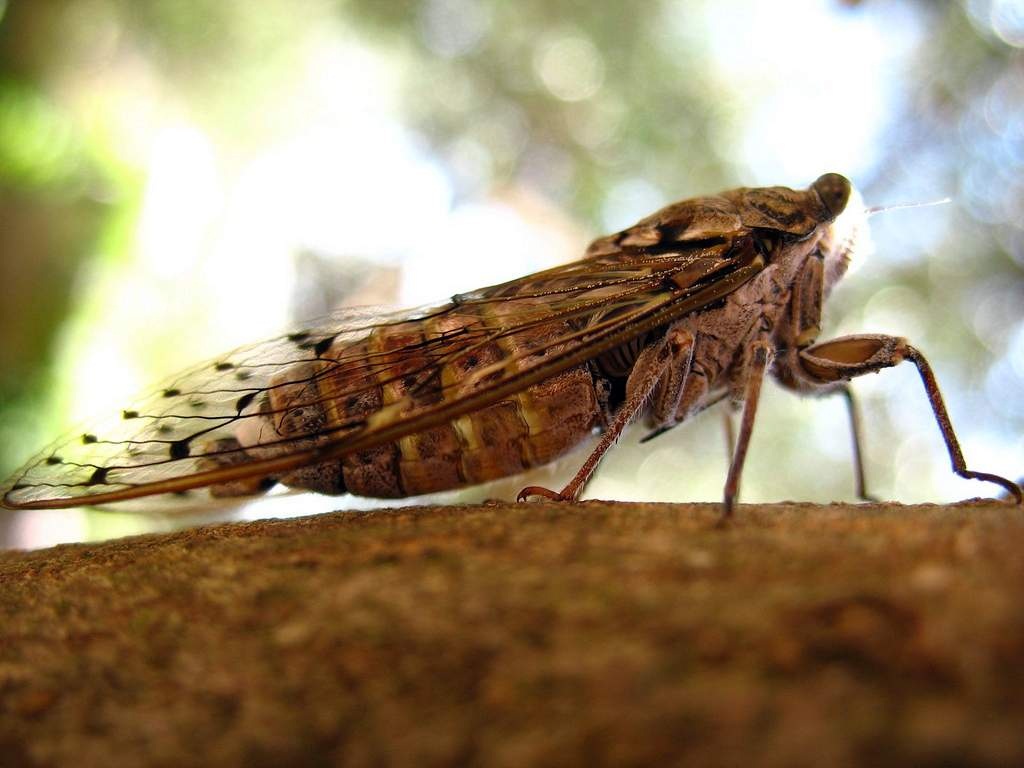
“How blessed are you, cicada, You are almost like gods ...” - these lines from the ode of the ancient Greek poet Anacreon can cause someone a feeling of bewilderment. The great poet decided to sing a simple insect? Such a question can be born only in ignorant people.
Family Cicadas REAL (Cicadidae) The largest cicadas are united in this family. Singing cicadas are inhabitants of mostly tropical and generally warm countries. There are many species of cicadas (about 1,500 species are known), reaching large sizes. For example, the royal cicada (Rotronia imperatoria) common in Indonesia has a body length of 6.5 cm, and a wingspan of 18 cm. The oak cicada (Tibicen haematodes) living in our southern forests has a length (including elytra) 4.5 cm, an ordinary cicada (Lyristes plebeja), also southern - 5 cm (about 9-10 cm in wingspan). And farthest of all, the mountain cicada (Cicadetta montana), which comes to the north, is only 2 cm in length.
This is one of the most amazing adventures of the animal kingdom, not only because it goes through different phases - like other types of insects - but because its life cycle is one of the longest of all insects, it has attracted the attention of numerous entomologists. In addition, they are large insects, there are tropical species that reach up to 18 centimeters in adult status, such as the Pomponia imperative west of the Sund Islands in the Malay Archipelago.
Cicadas exist with colors and shapes of great beauty, such as the cicada's lantern. Now we will focus on the beginning of your long, exciting and exciting journey. It all starts when a cicada mammal lays its eggs, previously fertilized by a male, in tree crevices. Cicadas usually fill the trunks and branches of pine trees in the Mediterranean, as they are abundant in abundance. A short time after laying, the mother dies. From a biological point of view, this is absolutely normal, the main function of all living beings is reproduction.
Photo 2. 
Singing cicadas are characterized by the fact that on their head between large convex compound eyes there are 3 simple eyes in a triangle. Both pairs of wings are of the same strength, transparent, and the power of the veins penetrating the wings attracts attention.
Thus, having succeeded in leaving offspring, they have already fulfilled their role. However, for our young hero, his journey has only just begun. After maturation, a new generation appears inside the eggs. As soon as they are born, they fall from the branches in order to reach the ground as soon as possible and be buried. With this resource they seek the protection of the earth's mantle, they are still too young and not ready to live on tree trunks, where they will be easily food for other arthropods and vertebrates.
Once it reaches the ground, an innate instinct drives them to dig without rest until they reach a certain depth. Life goes for it! Young nymphoid cicadas do not have the same organs and abilities as adults. They are characterized by having highly developed forelegs with which they tunnel through the soil in search of roots to suck up their fluids. Thus, they can move from one root to another in search of food. They do not yet have reproductive organs, no wings, and their mouthparts do not resemble those of adults.
Cicadas have characteristic spikes on the extended lower legs of the forelegs. Antennae in cicadas with 5-segmented tourniquet. In general, all cicadas are similar to each other, and, knowing the appearance of a species, it is easy to recognize a representative of this family in any other cicada. Only occasionally are cicadas that have different characters: for example, in the Brazilian cicada (Hemidyctia brasiliana), on the front wings, a thick vein separates the darker and leathery main part from the transparent membrane.
Its main function at this stage is to serve and increase in size. Unlike vertebrates, whose offspring are similar to their parents but smaller, young insects may not resemble adults at all. This can be misleading in species identification, as adults and juveniles may appear to be different insects. A prime example of this are butterflies, whose caterpillars are completely different from their parents.
During the nymph phase, the cicada has two powerful legs with which to create tunnels under the protection of the mantle of the earth. While our skeleton is inside, one of the arthropods is outside. That is, its soft part inside, and outside - the exoskeleton. It is made up of a substance called chitin cornea, which gives it hardness and protection. The skeleton of animals is the same from birth to death. But not so with insects as with our protagonist, the Mediterranean cicada. The exoskeleton does not grow like its owner, so they are forced to make different changes and go through different stages or ages where their outer skeleton remains small.
But such deviations are rare. The song cicadas got their name; for their exceptional ability to chirp. Even a small mountain cicada fills the air of our steppe forest plantations and ash forests with a loud chirring, reminiscent of the chirping of grasshoppers. In the evenings, somewhere in the Crimea, one can hear the incessant, abrupt chirping of an ordinary cicada. In the tropics, cicadas “sing” even louder, their chirping resembles the sound of a circular saw, and in South America and India, the sounds made by cicadas are not inferior in volume and sharpness to the piercing whistle of a steam locomotive.
During molting, the cicada's new exoskeleton remains soft and must wait a while for it to harden. Throughout its life, the cicada goes through seven different ages. Depending on the type, cicadas typically spend 5 to 17 years underground. Our buzzard is usually not underground for more than a few years, unlike some North American species that can go up to.
After the molt is made, only the armor that once served as protection remains. After spending several years in the bowels, the specimen gained weight, size, and underwent six exoskeleton changes. With each of them, his form changed and more and more resembled that of his parents: his wings developed, as well as his mouth parts and reproductive organs. However, it still has the last change. But it should appear on the surface. At the moment, between late spring and early summer, our main character leaves the security of the tunnels and goes outside.
Photo 3. 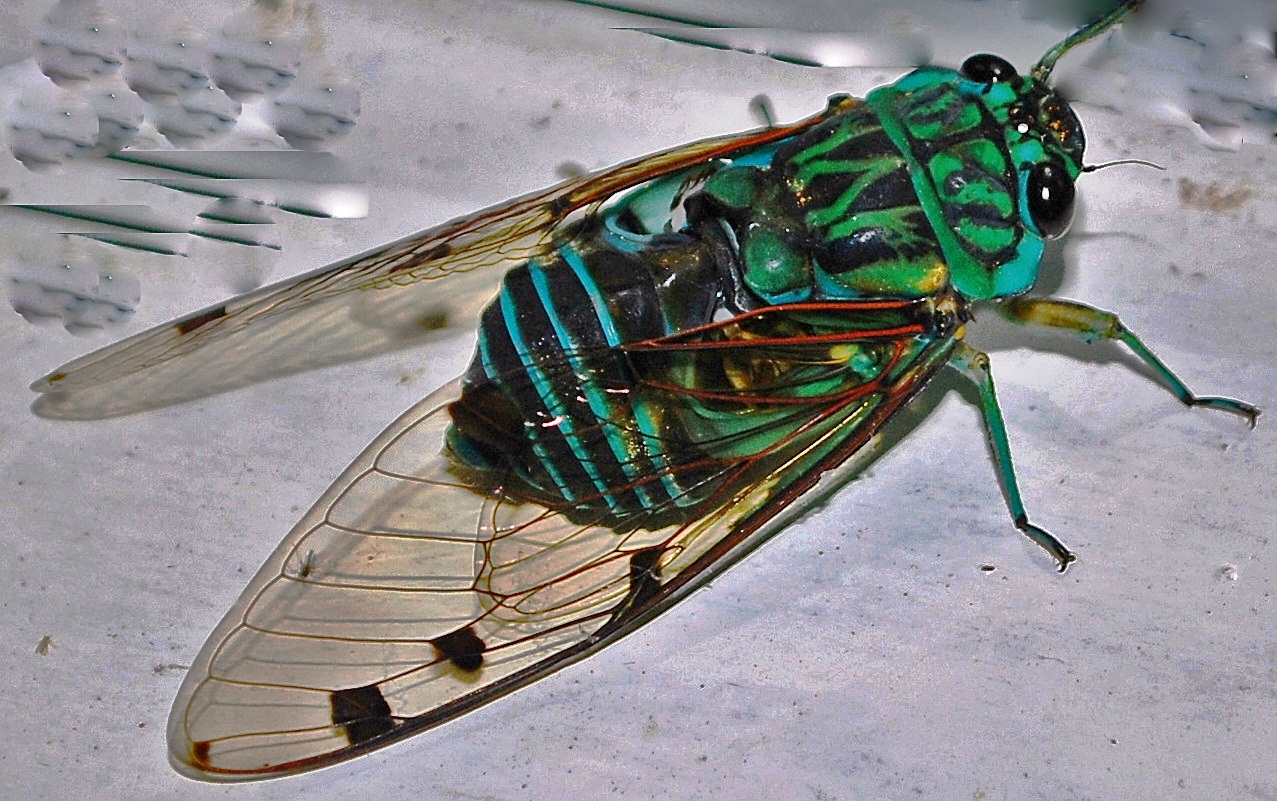
Only males make sounds, which have a pair of convex plates - cymbals on the underside of the anterior segment of the abdomen. Powerful muscles approach the cymbals, drawing in their convex part, which, when the muscle relaxes, returns to its original position. The sound is produced by a change in the convexity of the cymbal, in the same way that a can with a convex bottom sounds, if the bottom is alternately pressed in with a finger and released again. Muscles in insects can vibrate very quickly. In addition, this sound organ has resonating plates that amplify the sounds of the cymbal.
Instinct prompts him to scale the bark of trees or plants. When it reaches a certain height, the seventh and final molt begins. From the inside, he breaks the breastplate through a cleft in the upper central part chest, right behind his head. After a costly effort, we can observe a whitish pattern. This is because the chitin cornea of the new shell is still wet and needs to harden. The specimen is now a fully developed adult with wings to move around in search of a mate.
He also has reproductive organs as well as the necessary organs with which to perform his famous song to conquer women. During his main stage he was designed for feeding and growth, in the adult stage everything is focused on reproduction.
Photo 4. 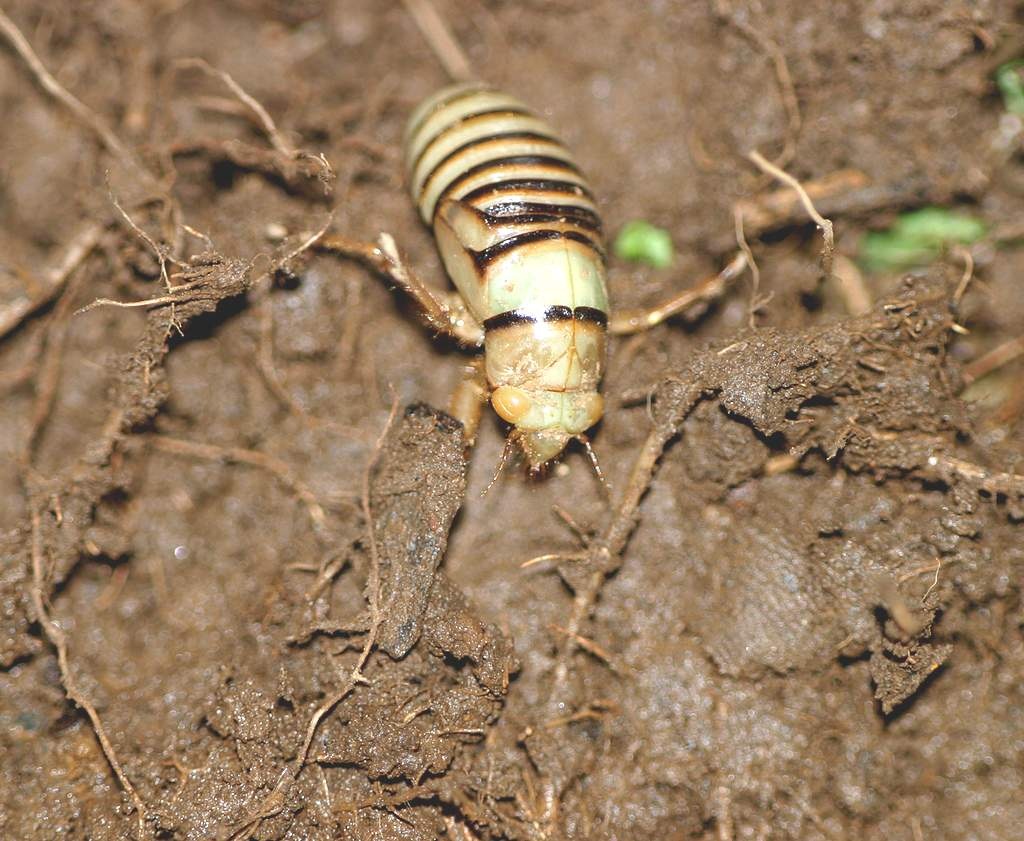
Cicadas are the loudest "singers" among insects: neither crickets, nor grasshoppers, nor other chirping forms can compare with cicadas. The singing of cicadas is considered beautiful in many countries (in Indonesia, in France). Not everyone knows that in I. A. Krylov’s fable “Dragonfly and Ant”, the word “dragonfly” is unsuccessfully called a cicada. Dragonflies do not jump (and cicadas have jumping legs), they do not sing (but cicadas sing), etc. - everything that is said in the fable about the dragonfly does not fit it, but approaches the cicada. The fact is that Krylov used the plot and images of the famous French fabulist La Fontaine (and La Fontaine used the plots of the ancient Greek fables of Aesop).
The cicada is moulting. Its white coloration is due to corneal chitin, which is still soft and takes time to cure. All male specimens of the cicada are large tenors. Their devotion to singing is such that some believe they might die for this cause. Because of the high pressure they have to submit to in order to develop their characteristic singing. However, this is not the case. In addition, its melody is unique among all insects. It is produced by two membranes called thimbles located inside two resonant cavities located on the sides of the abdomen and supported by powerful muscles that cause them to vibrate at high speed.
In the homeland of La Fontaine, the chirping of cicadas and the cicadas themselves are known to everyone, but in the north of Russia, near St. Petersburg, there are practically none. I. A. Krylov was not strong in entomology and translated the word "cigale" (cicada) as "dragonfly". We do not have a popular name for cicada. The life of cicadas is long. Our mountain cicada (the name is unfortunate, since there are many of it in the lowland forests in southern Russia and Ukraine) develops for 2 years, the common cicada - 4 years, and in North America the periodic cicada (Cicada septemdecim) - as much as 17 years! The conditions for the development of cicadas are quite similar.
We must also take into account the factor of competition. If a man raises the power of the sound, his neighbors will do the same. All this to attract as many women as possible. This is one of the biggest singing competitions in the animal kingdom! The male exemplar is ready to start his sonorous and powerful song, the purpose of which is to conquer and attract a woman.
When a woman has chosen a man, he will fly to him. After the meeting, both members join their reproductive organs located in the terminal part of the abdomen. This process usually takes some time until the man is convinced that his genetic material, sperm, is completely in the future maternal cicada. Hence, it is an internal reproduction. At this stage, the role of the male has already ended. However, for the female, there is still the last and most important step - laying. To do this, he uses a thin and long thread in the form of a tube, indicated by a tube.
Photo 5. 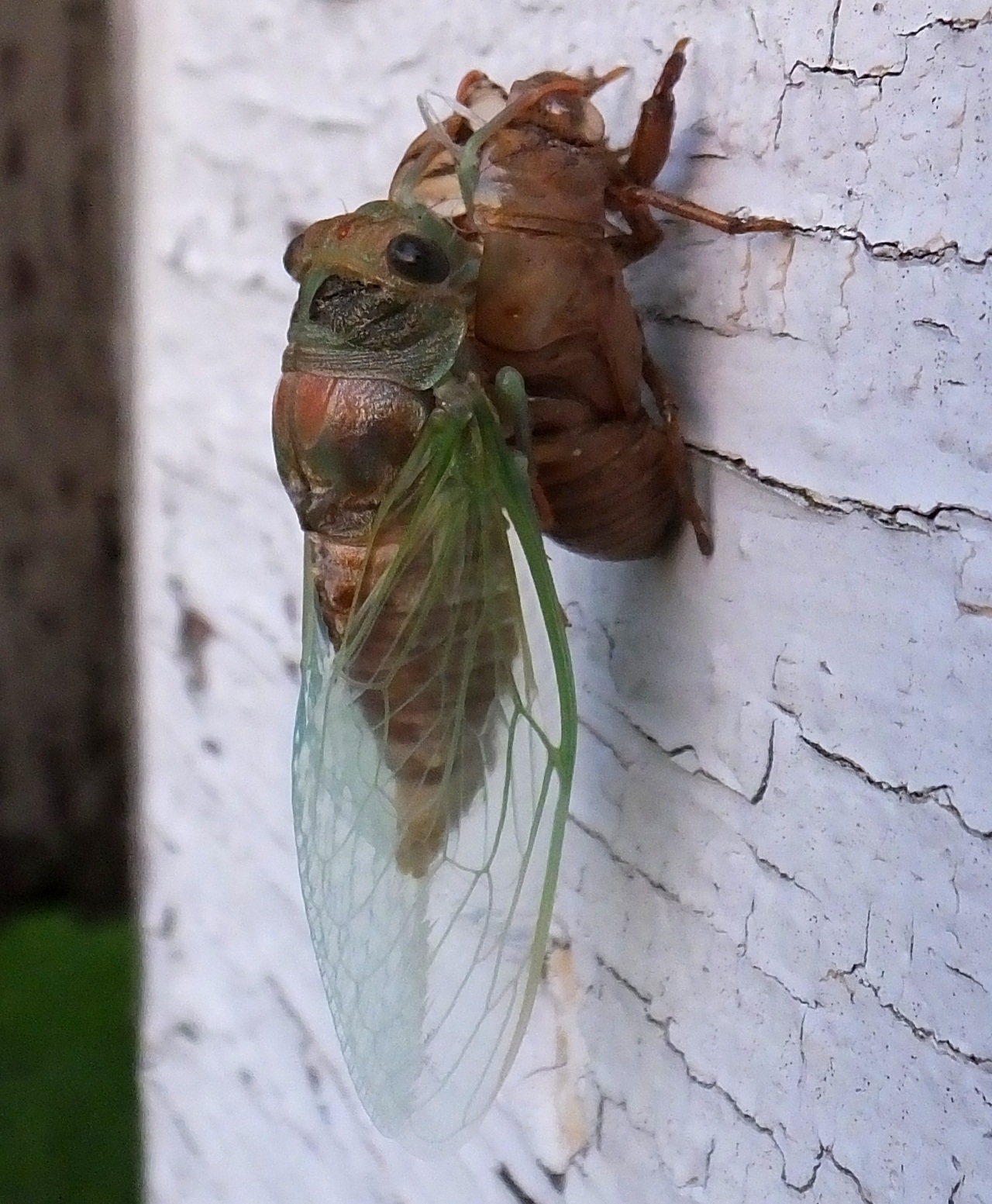
Cicadas lay their eggs under the bark of thin twigs or in the petioles of leaves, as does the mountain cicada on an ash tree. The female at the same time cuts the bark with a serrate ovipositor, as a result of which the tips of the branches or leaves dry up. After hatching, the larvae fall to the ground and burrow into the soil, where their further development takes place. Often they burrow deep into the ground, to a depth of more than 1 m. In the ground, they feed on the roots of various trees. Cicada larvae have little in common with adults in general appearance. The body of the larva, as almost always in insects developing hopelessly in the soil, is whitish, and the front legs are powerful, digging. The larvae make a cradle with compacted walls around them.
But first you must find a safe place for the eggs. It is often placed in small cracks or fissures in the bark or twigs so their offspring are well protected, safe from possible predators. After the mating phase, the adults die. Your mission is accomplished and successfully completed. Everything is ready so that in the years to come their descendants will continue to love the song so characteristic and characteristic of our Mediterranean forest and other habitats of the planet.
The pair join their bellies to perform breeding. The most vital life function of every living being. These insects have much in common, for example, they have the same type of metamorphosis, they have the same oral apparatus. The large volume of sound emitted by cicadas distinguishes them as noisy representatives of insects.
Before the end of development, they rise to the surface, remaining in the mink until the moment preceding the transformation into an adult insect. In dry and rain-protected places, adult larvae simply sit at the entrance to the mink, and in open places where the mink can be flooded with rain, they make an earthen tube over the mink with the top taken away by the knee so that water does not flood, as they did pipes for samovars. It is unclear how much cicada larvae damage trees.
The sound-producing apparatus consists of a pair of drums or timbres, which are located inside a resonant chamber at the base of the abdomen, vibrating under the action of powerful muscles. The "membrane" of the drum or "patch" is moved in or out - by the action of the muscles - creating the sound. It has been assimilated by the characteristic background noise of a can of canned food when the center of it is pressed.
Cicada songs differ markedly from one species to another, and their function seems to be to group individuals and attract females to males, although they have been described in addition to songs of motorcade, rivalry, and pain. Adults of these insects feed on vegetable juices sucking from the buds and young branches of plants. The female inserts the eggs into twigs with a device at the end of the abdomen. This takes place in January, the birth takes place between March and April, the newborn nymphs immediately go to the ground and nail their oral apparatus to the roots.
Photo 6. 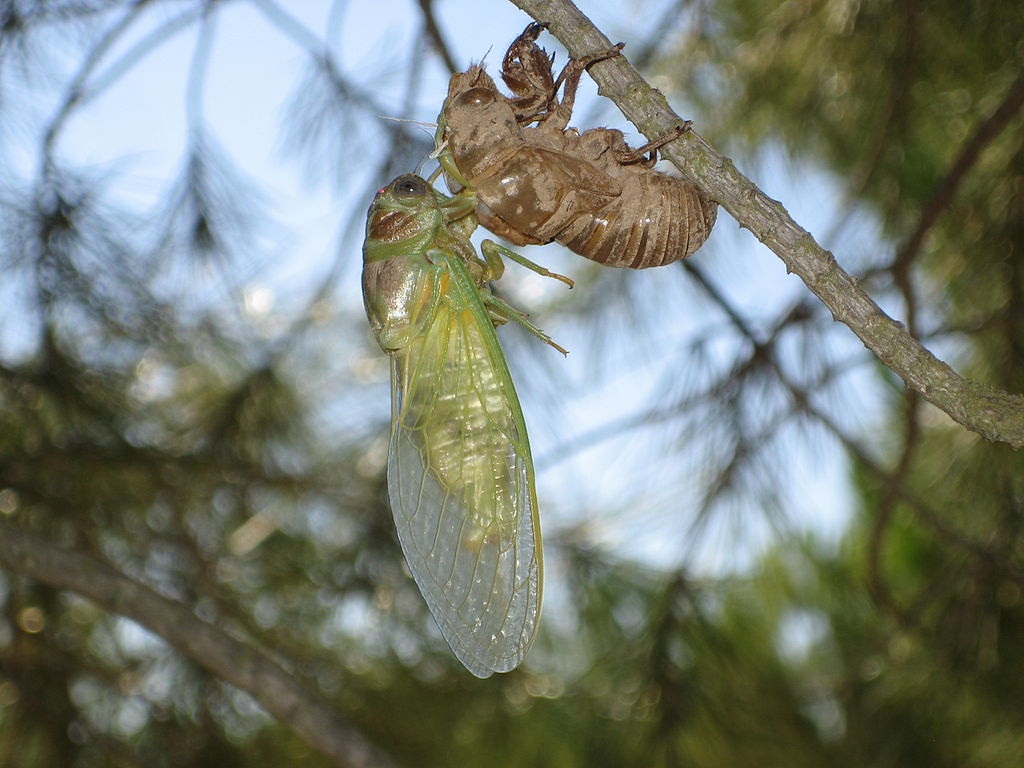
In many forests of ash and linden, several hundred cicada larvae were found in the soil, but no oppression of trees was observed. But the laying of eggs in shoots and leaf petioles sometimes leads to the loss of a significant part of the leaf surface. In Brazil, several species of cicadas are known to be dangerous pests of the coffee tree. Only song cicadas are called "cicadas", representatives of the following families are often called by us the common name "cicadas", since the species of our fauna are of small size, usually a few millimeters.
In other words, juvenile states are underground because the previous legs are thick and shaped that allows them to build galleries in search of roots to feed on, these galleries or chambers that build around the roots increase them in what they need more space for their growth. The duration of this state is very long, reaching some species up to several years.
In summer, the nymph returns to the soil surface, joins the branch, and makes its last change into adulthood. If you feel a sense of watching, do not be surprised if on the leg or on the trunks of the trees where you heard this infernal noise, you will find granules corresponding to the last molt or ecdysis of the cicada. They will be able to recognize them because they appear to be empty insects, transparent and large in size.
Photo 7. 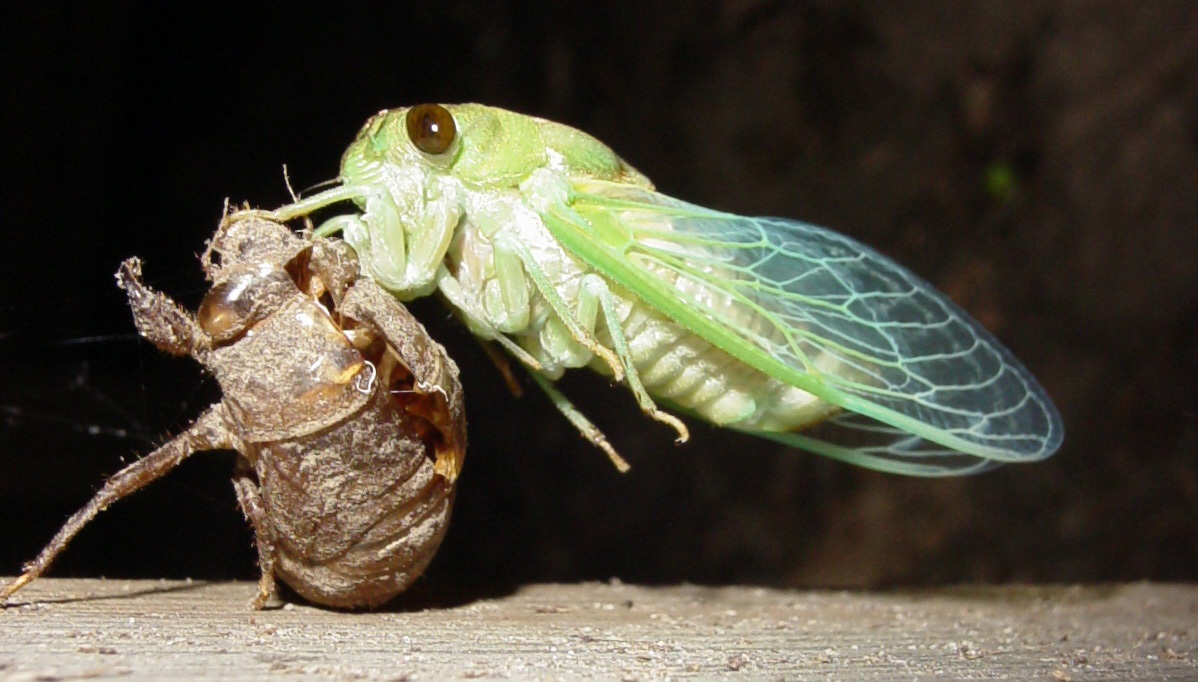
Flying insects known as cicadas are among the wild wonders of nature: some broods spend 17 years in the ground and then come out in the billions during a certain spring to mate, lay their eggs and die. Cicadas spend most of their lives as larvae living underground, sucking juices from plant roots. They only live for about 30 days as adults.
The mother is an exaggeration of the poet's dream, because in the world of insects, Nature always saves the mother's indescribable pain by seeing her teeth die. When they took you away While nature was crying for you. Your sisters and your mother sang. The mother is an exaggeration of the poet's dream or desire, for in the world of insects, nature always rescues or rescues the mother's indescribable pain by watching her children die. Also, among the cicadas, the mother does not sing, because only the males have a sonorous instrument with which, perhaps, to seduce their interlocutor with his endless song and abstinence.
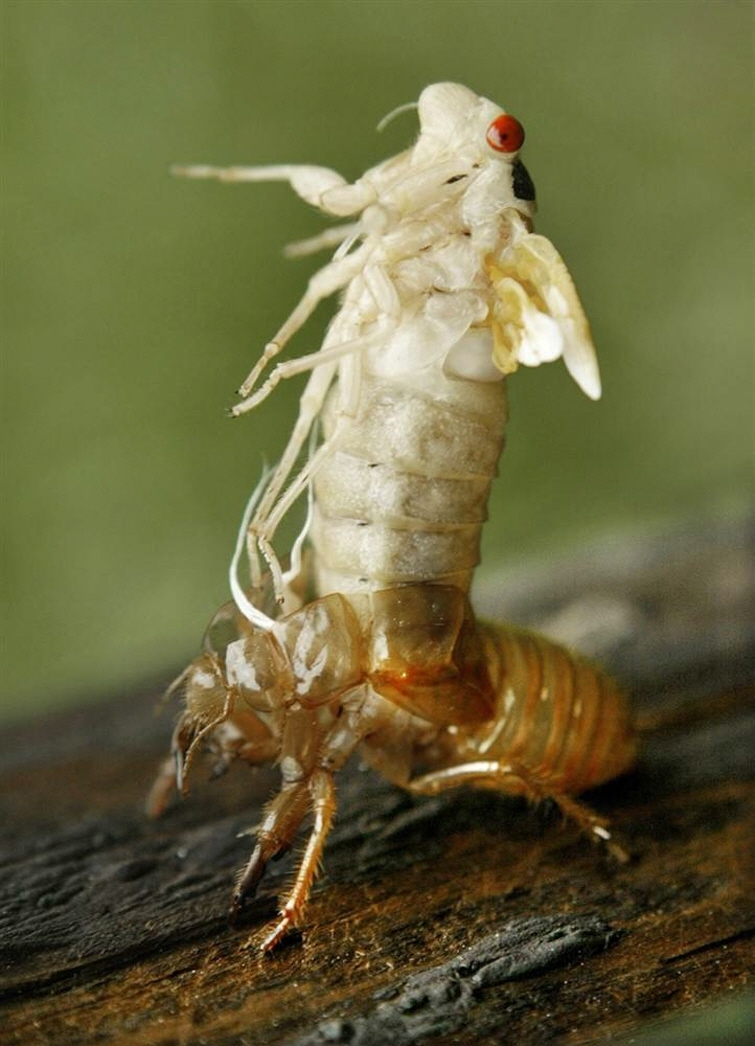
In China, the cicada is considered a symbol of longevity, eternal youth and even immortality. For the living, the cicada is a symbol of long life, happiness and eternal youth.
It used to be a custom among wealthy Chinese to put a cicada made of jadeite into the mouth of the deceased before burial to ensure an eternal afterlife.
Finally, we can answer the question that those who sing or squeal are not cicadas, but cigarettes! This family consists of 000 different species, while there are about 500 different species of cicadas. The male cicada has a device that emits the sounds or songs of these famous insects. The song of male cicadas serves as a sort of sex appeal to attract female cicadas. Some species of cicadas can reach an impressive 120 decibels with their harsh singing. Due to their extremely uncomfortable and harsh singing, the cicadas themselves have a pair of membranes that serve as ears.
The first few years of life, cicada larvae spend underground, then go outside and become adult insects. This ascension, as if from the grave, was noticed by the ancient Chinese, who saw in the cicada a symbol of resurrection. This is another reason why the cicada was placed in the mouth of a dead person, wishing him a good next incarnation.
Recently, the cicada has been used not only as a symbol of longevity, but also as a symbol of the duration of the race and fertility in general, so it is widely used as a gift for newlyweds and couples planning to have children.
Photo 8. 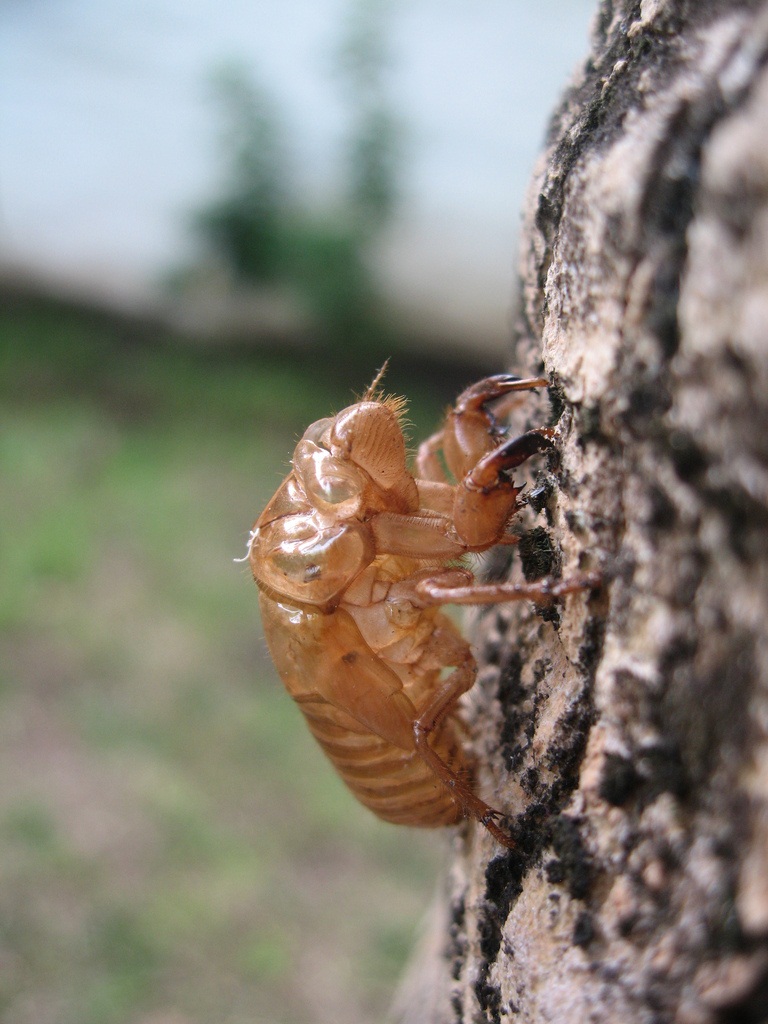
Now in China, the cicada is considered a very popular symbol and is widely used not only as a symbol of eternal life, but also to restore depleted luck. The cicada symbolizes the "great return", it can help you relive the most beautiful, happiest moments of your life.
In addition, the cicada is a symbol of protection. It is said that if you wear a cicada as an ornament, you will receive a warning in time and be protected from the danger caused by the approach of an enemy or an insidious friend. Previously, courtiers often hid a jade cicada in their robes in order to protect themselves and not become a victim of palace intrigues. Now the cicada is widely used in the world of politics to protect against political intrigues. In this regard, the cicada can be considered an amulet. The cicada is placed on the desktop to protect itself from office intrigues. The image of a cicada sitting on bamboo is a double symbol of long life.
Photo 9. 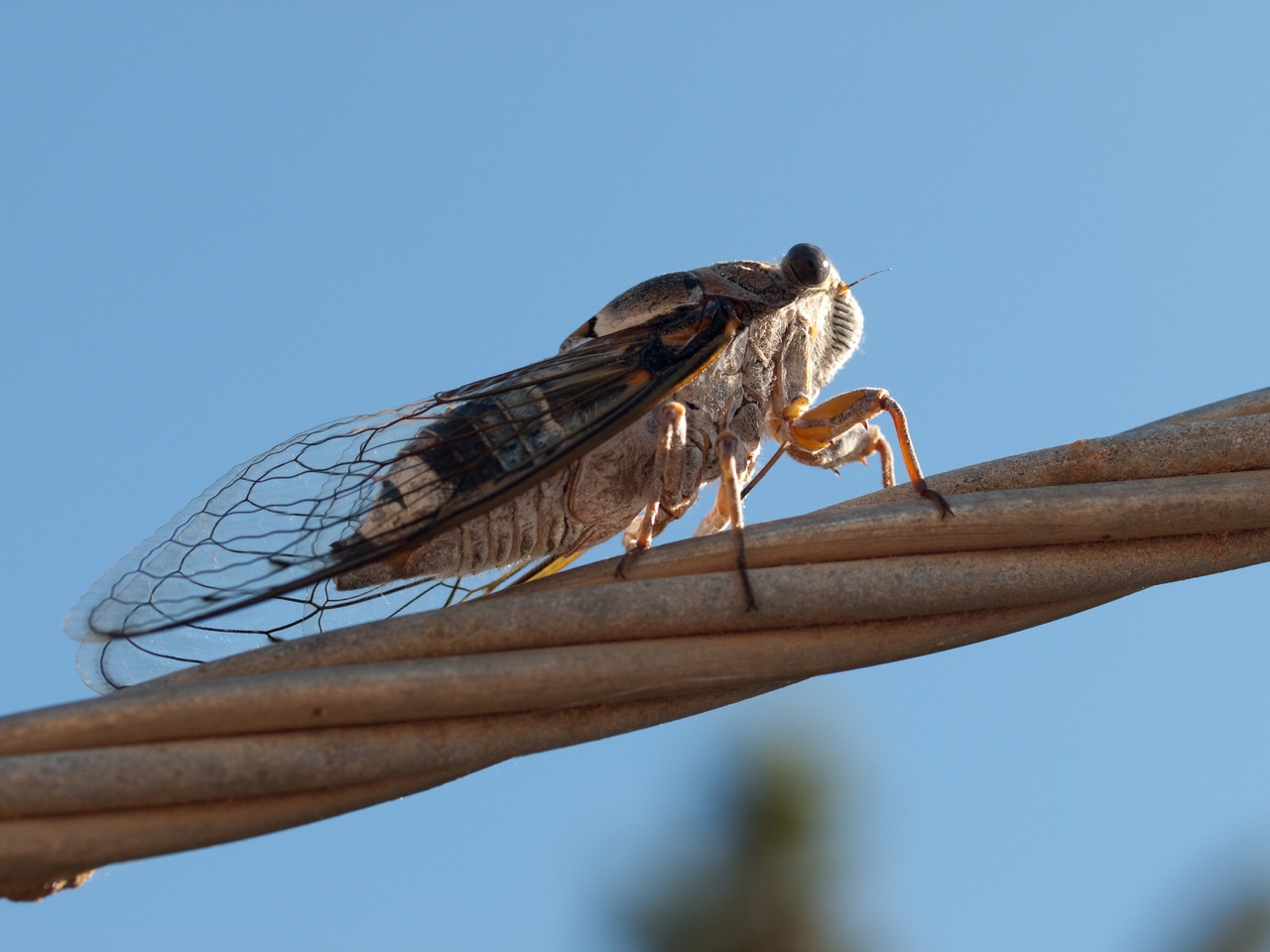
In fact, the cicada is an insect with amazing qualities. The main one, of course, is musical talent. Like grasshoppers and crickets, cicadas are famous for their melodic chirping. In addition, the mechanism for performing the “song” of cicadas is completely different. On the abdomen of the cicada are two membranes called cymbals. With the help of special muscles, the cicada either strains or relaxes them. The resulting fluctuations give rise to chirps. This instrument is equipped with an amplifier - a special chamber that opens and closes in time with the vibrations. Thanks to this amplifier, the cicada is the loudest of all "musical" insects. Her chirping can be heard at a distance of more than 800 m, and close up she is able to drown out even a loud conversation. Unlike grasshoppers, both males and females can chirp in cicadas, but the former do it much louder. The main goal of the song is the same - to attract the attention of the female.
Photo 10. 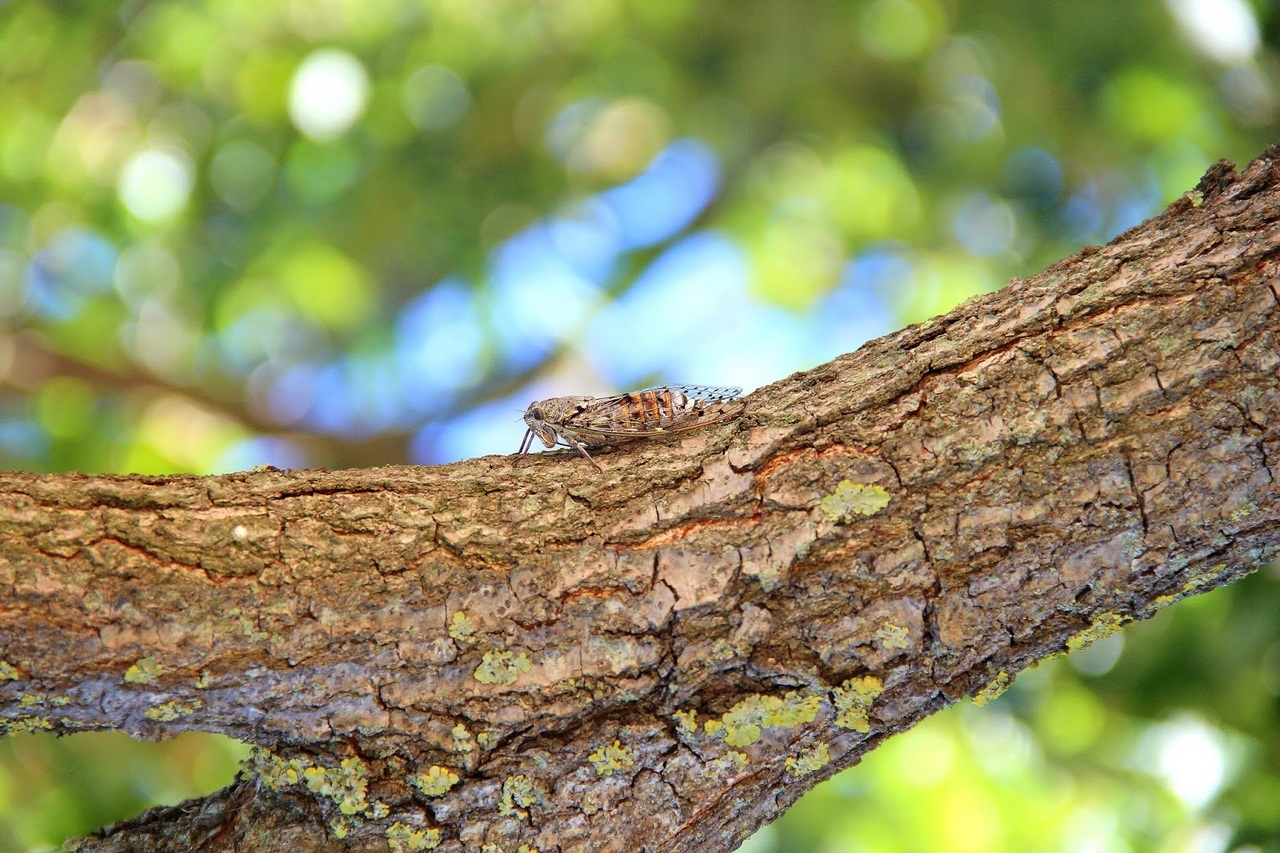
But back to Ancient Greece. Even before Anacreon, attention was paid to the cicada in one of the myths that tells about the competition between two musicians - Evnus and Ariston. The first was more skillful, but while playing on his harp, a string suddenly broke. And then a cicada appeared, which sat on a harp and replaced the broken string with its singing. As a result, the victory went to Evnu. This beautiful legend gave rise to an emblem that symbolizes music, and has not lost its relevance in Greece to this day - the image of a cicada sitting on a harp. The performing talent of the cicada was also admired in the Ancient East.
Some song lovers even kept these insects in special cages to enjoy their chirping at any time. However, the voice of the "blissful cicada" can not only bring pleasure. In the deserts of North America, the cicadas unite in a great chorus, the power of which can not withstand the eardrums of man. What then to say about the predators of the desert, in which the threshold of hearing sensitivity is much lower than the human one. None of them will dare to approach the singing cluster of cicadas.
Photo 11. 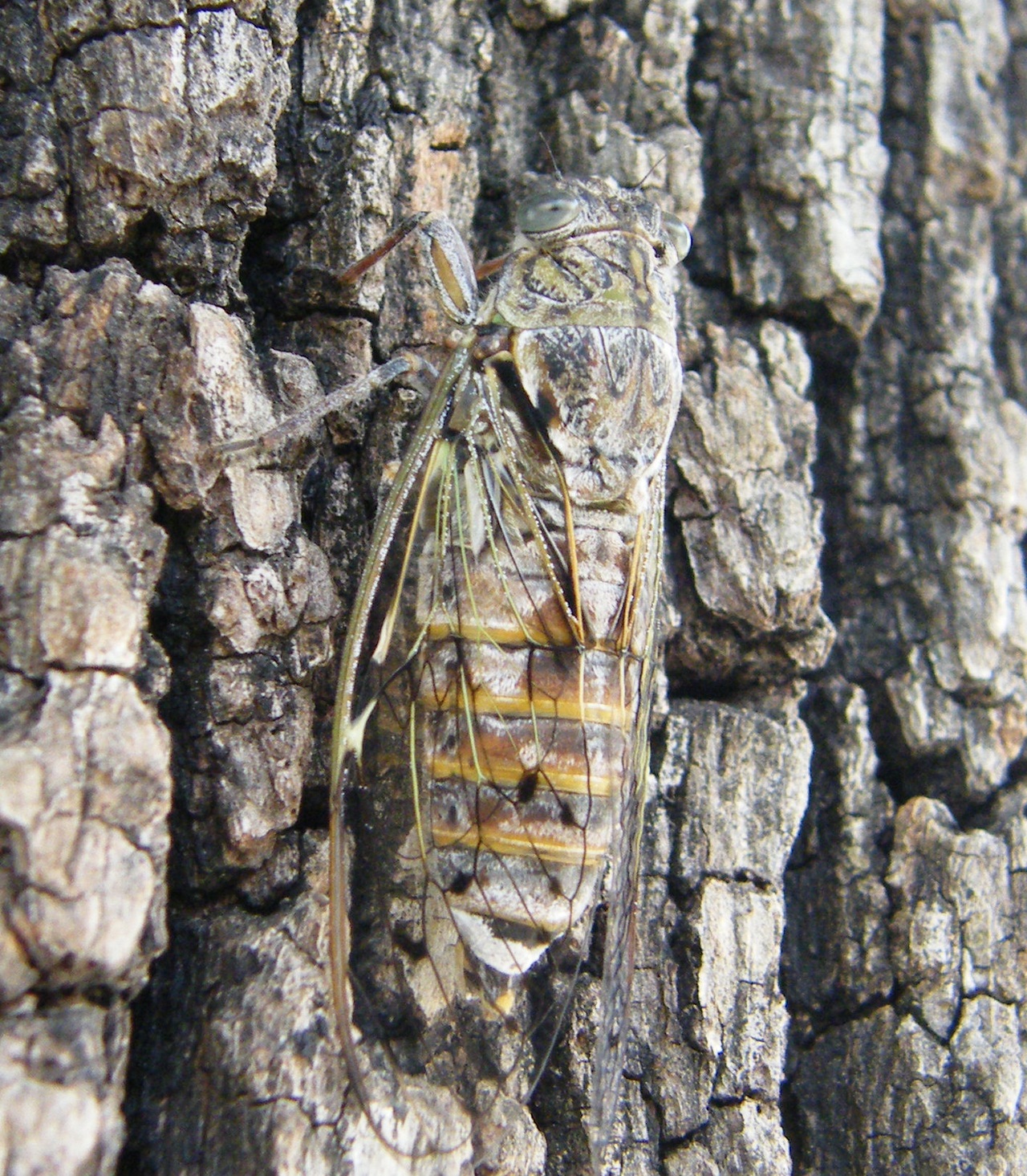
Mere mortals at different times paid tribute to the nutritional qualities of the god-like cicada and boldly ate it, frying it in vegetable oil. Until now, the insect is eaten in the poorest regions of Africa.
Scientists have made a curious assumption explaining such a long period of development of the larva. Perhaps, in ancient times, there were predators on the planet that specialized in adult cicadas. To save the species from extinction, insects have increased the time spent by offspring under the ground. The hunter could not bear this and disappeared from the face of the Earth or retrained. Cicadas, on the other hand, have retained their life cycle and are now among the longest-lived record holders in the world of insects.
Photo 12. 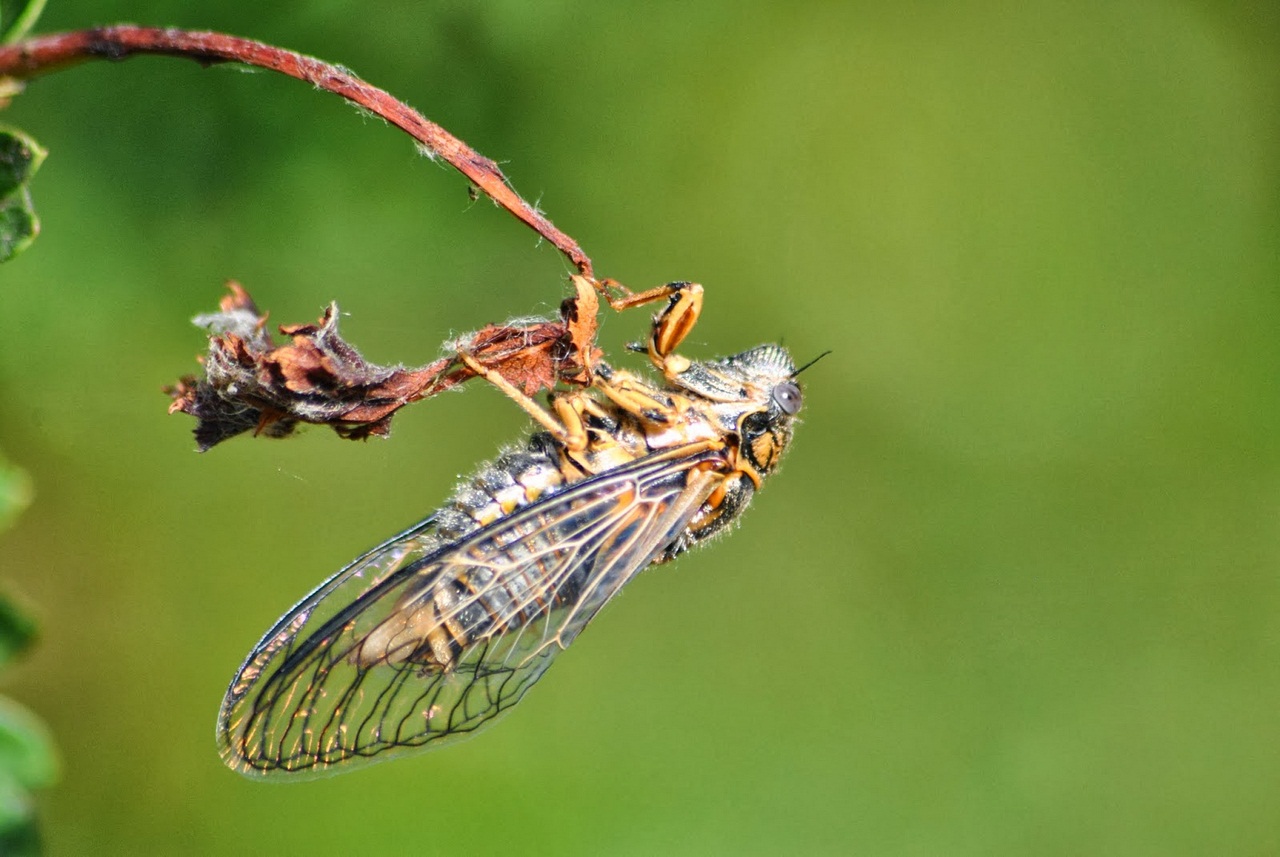
Cicadas are 100% vegetarian. Their offspring feed on the roots of plants, and adult representatives - on the juice of various plants. In turn, cicadas have many enemies among insect predators. For example, some species of earthen wasps prefer cicadas as food for their larvae. In general, cicadas lead a rather leisurely and even lazy life. They come to life only under the sultry rays of the sun.
Photo 13. 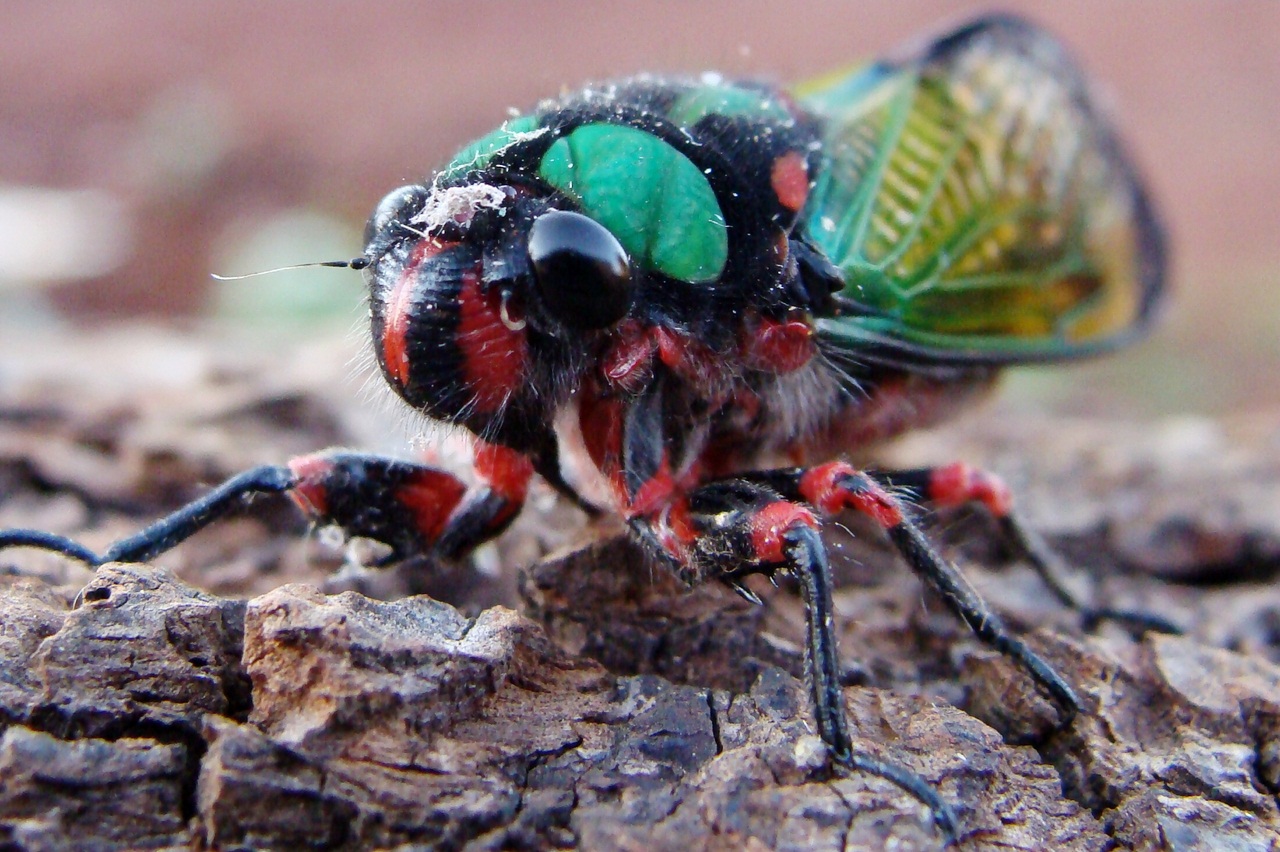
Photo 14. 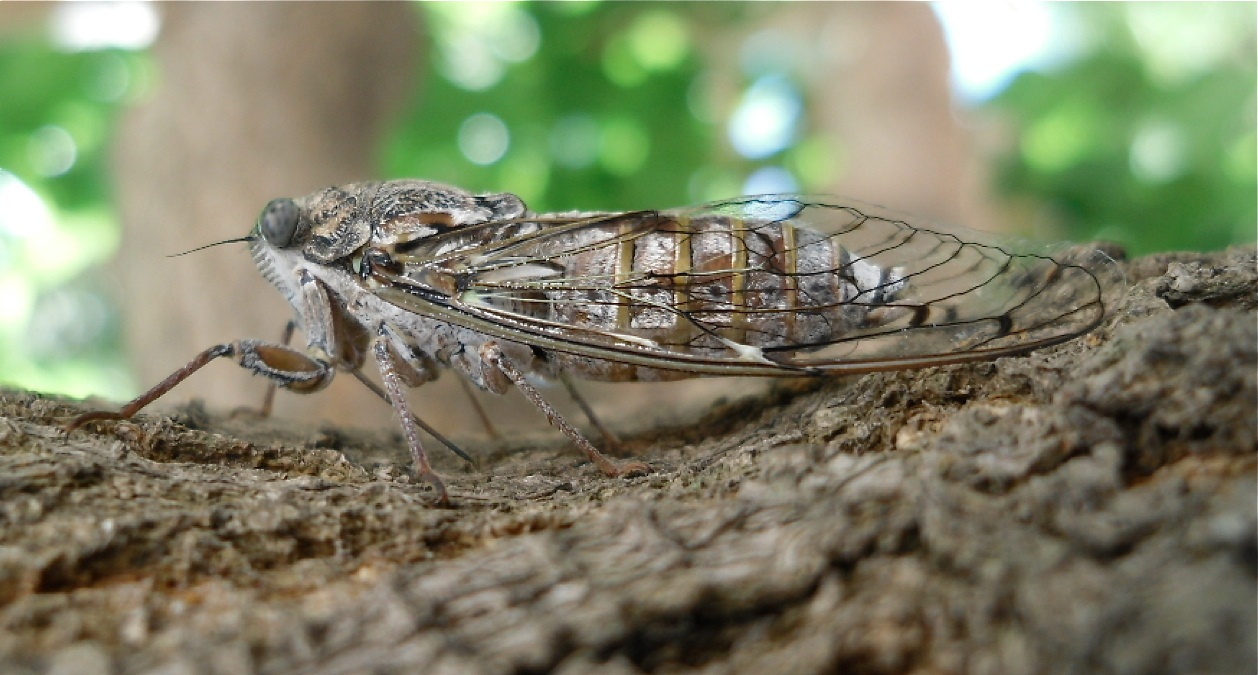
Photo 15. 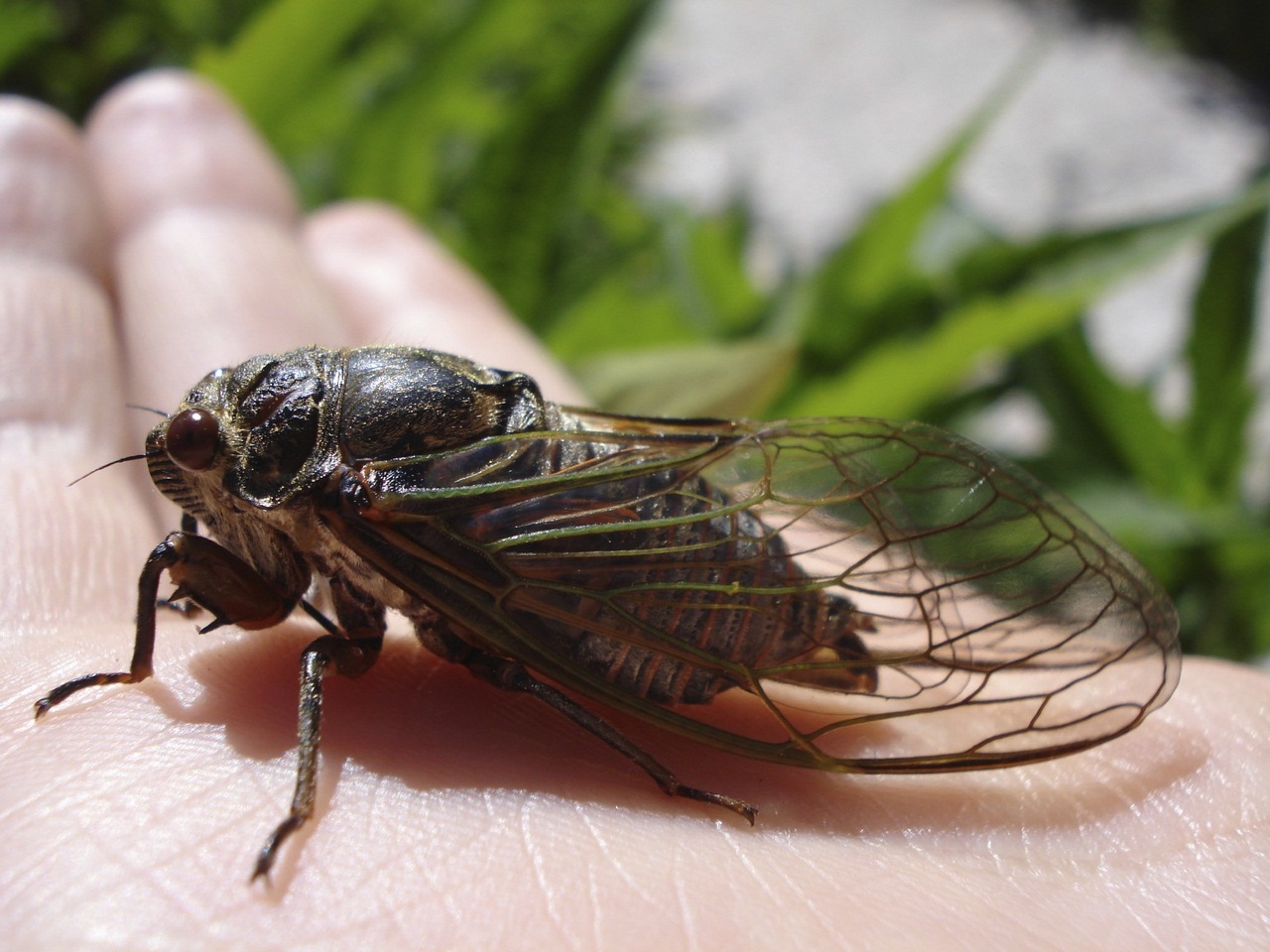
Photo 16. 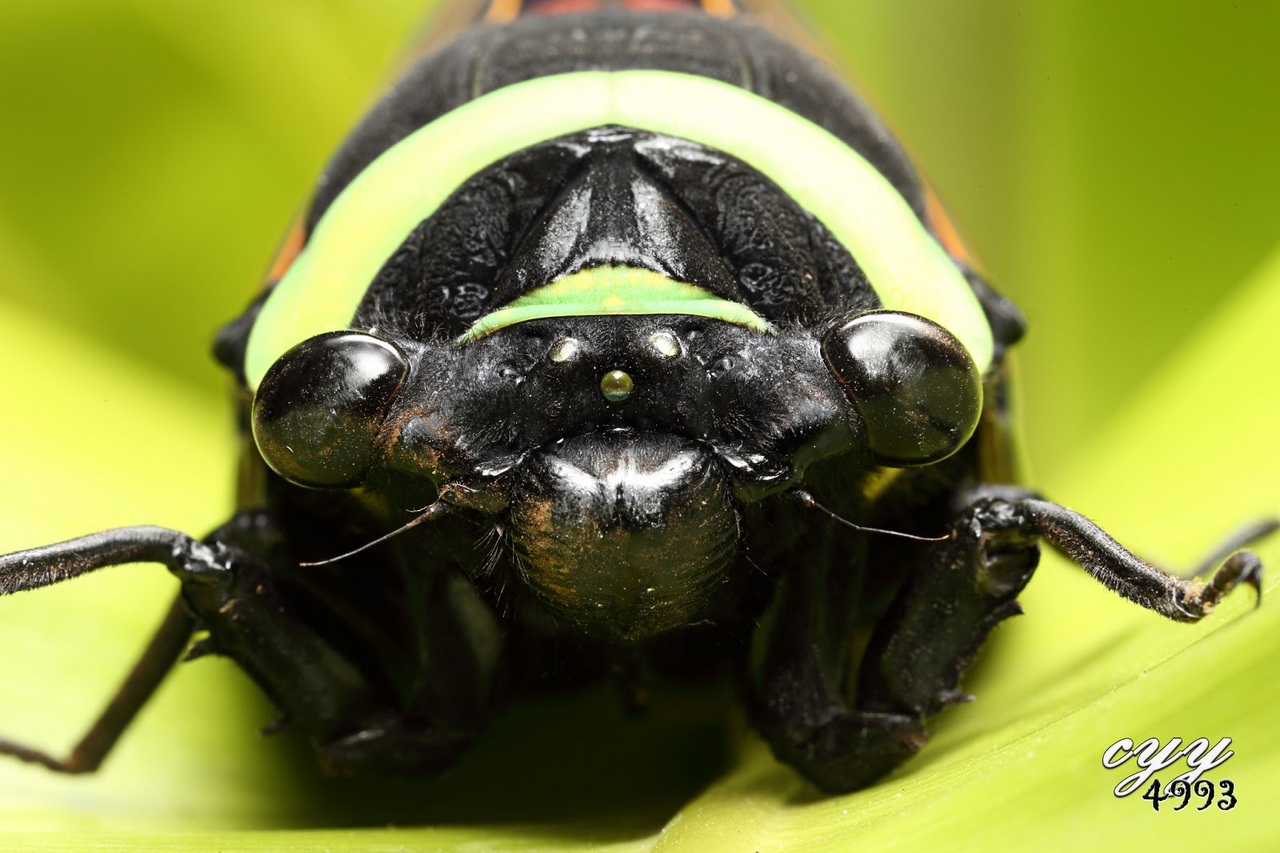
Photo 17. 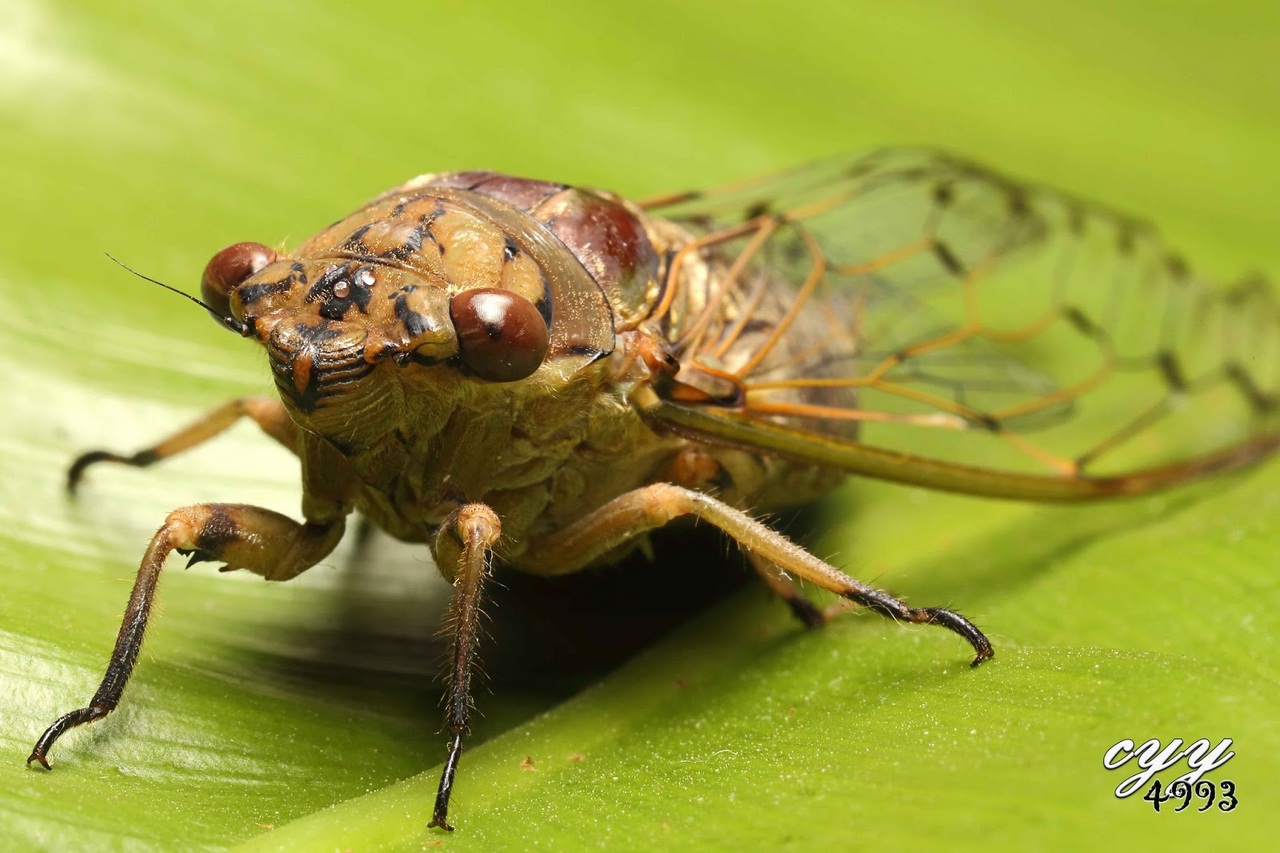
Photo 18. 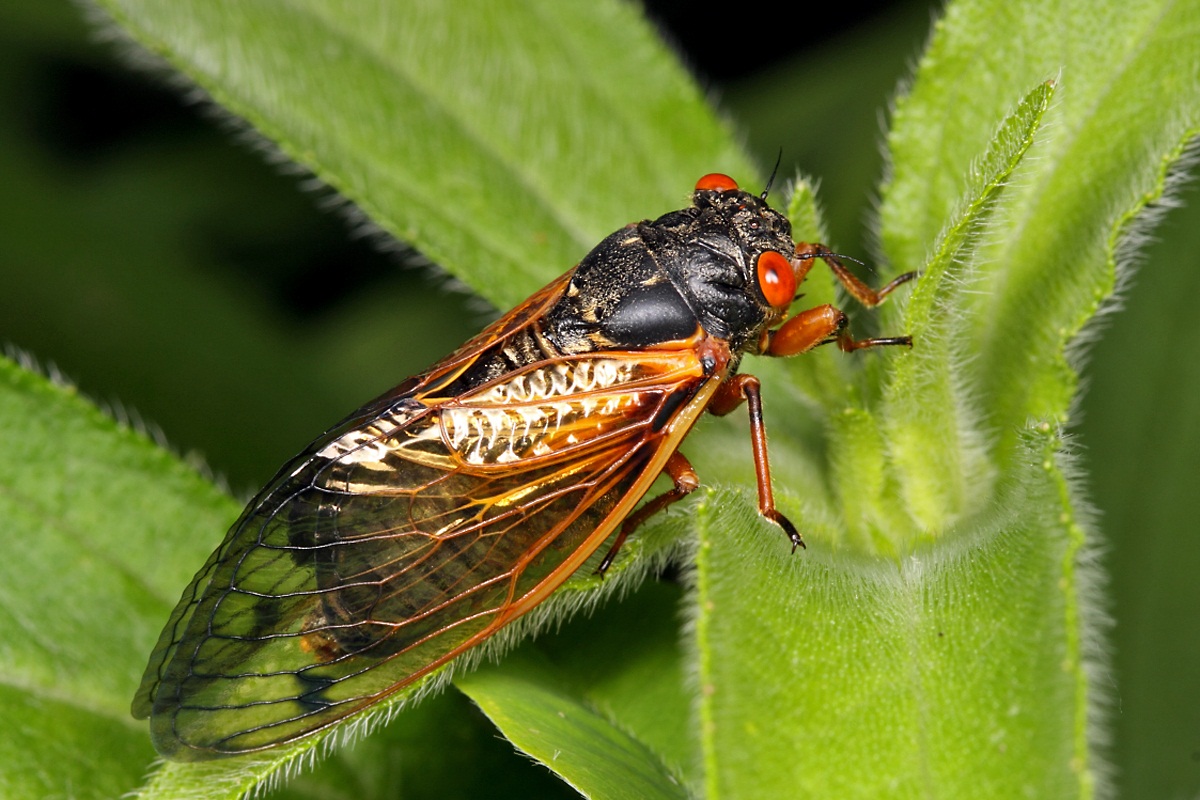
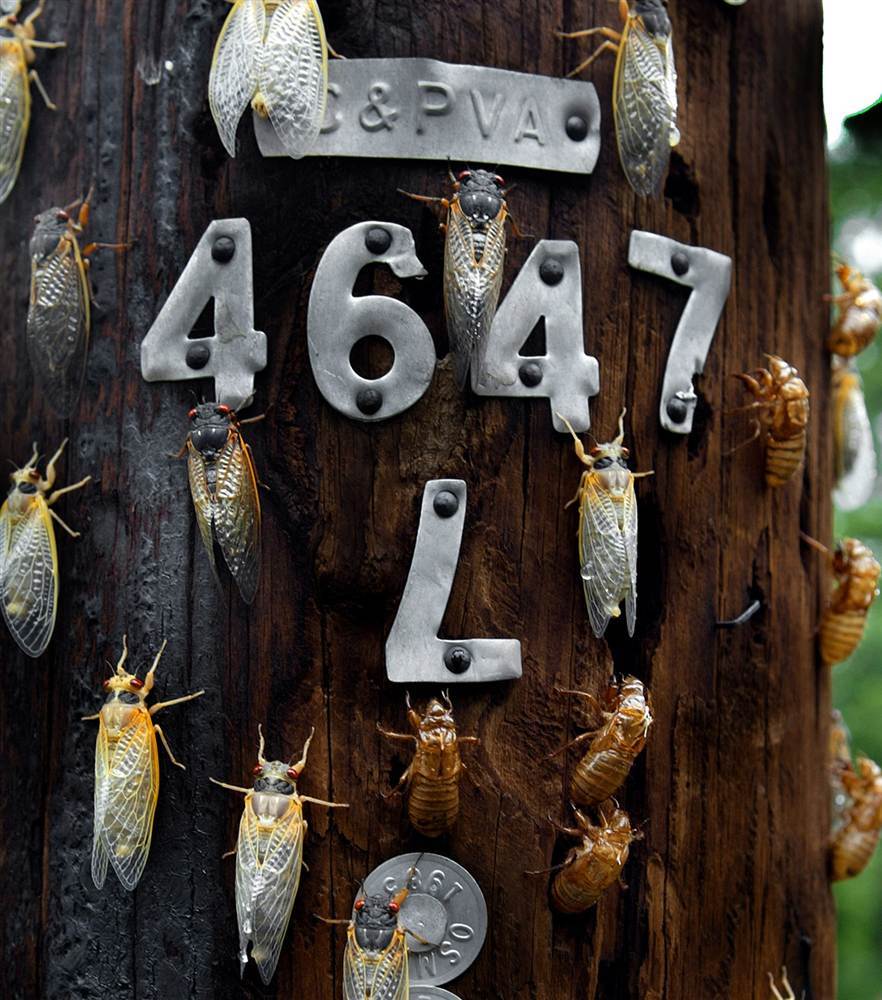
Photo 19. 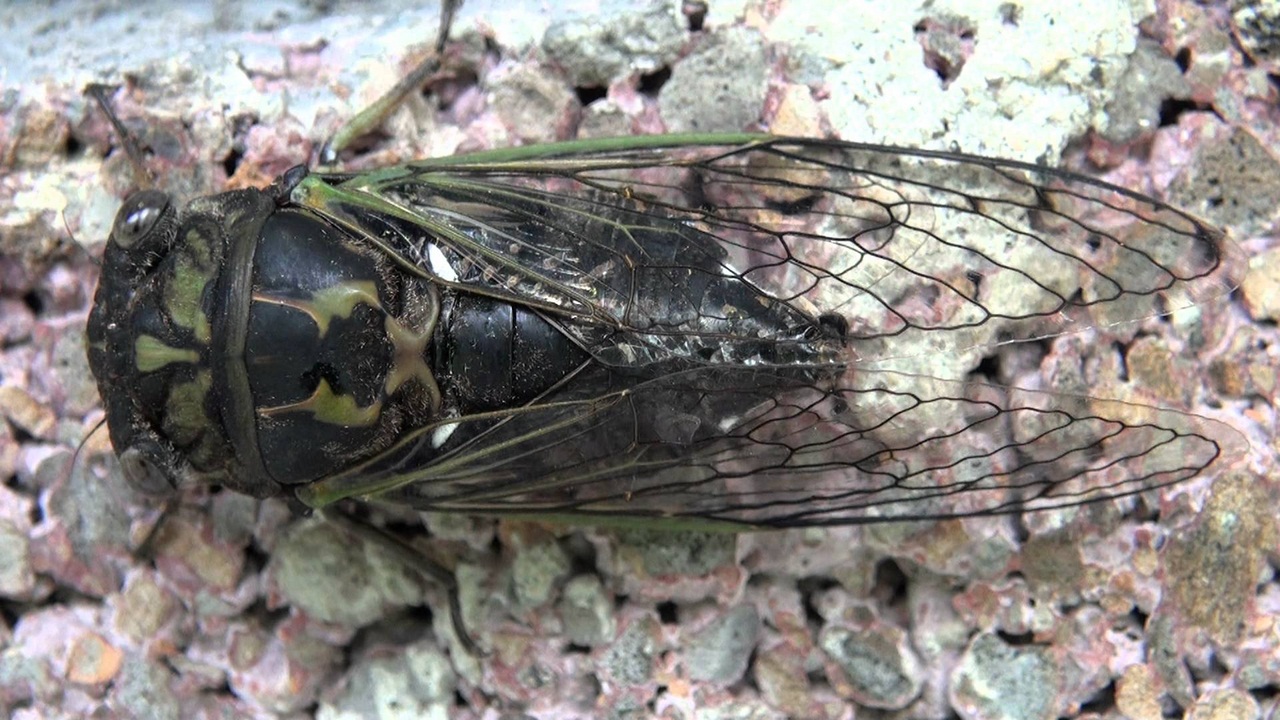
Photo 20. 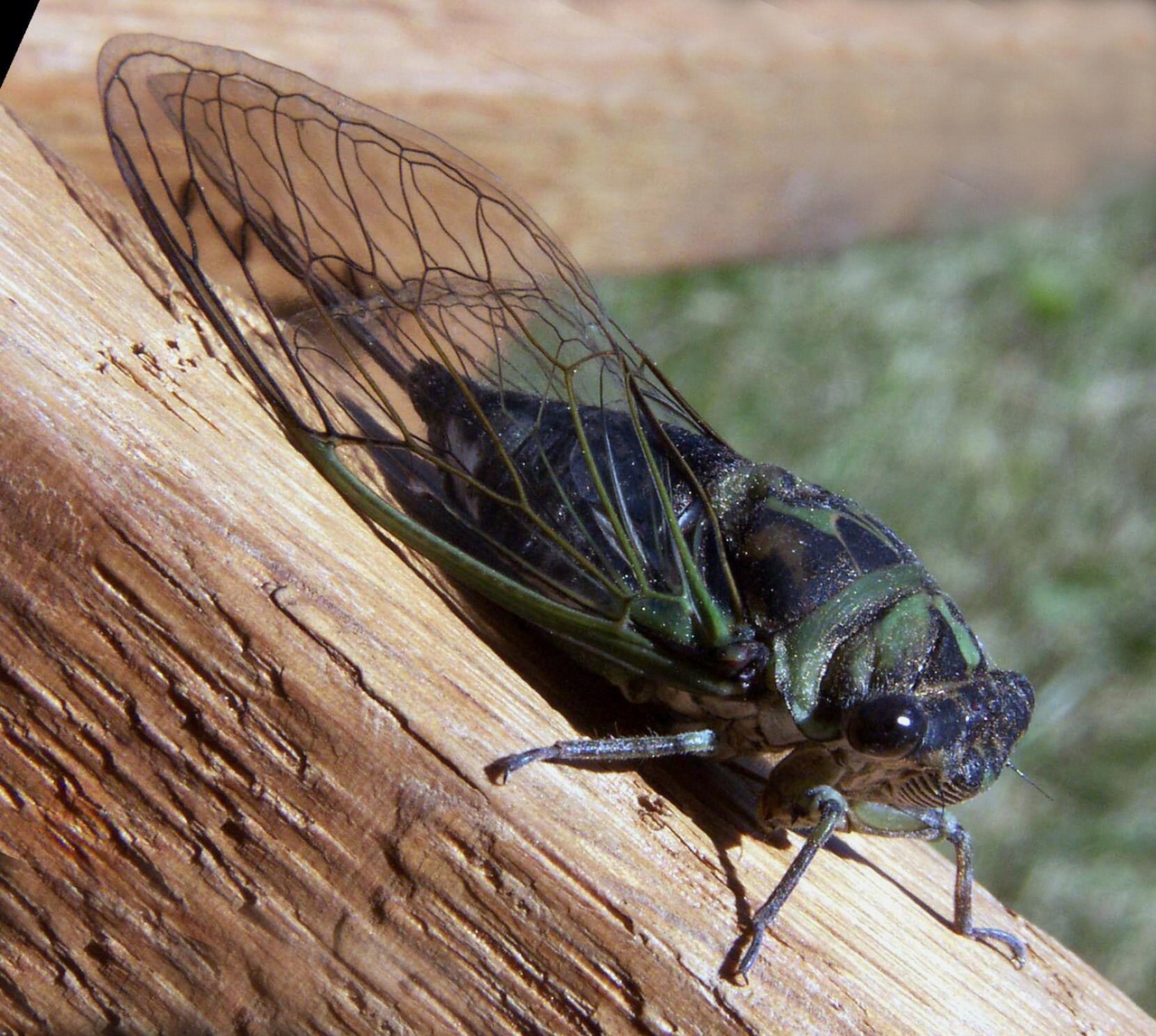
Photo 21. 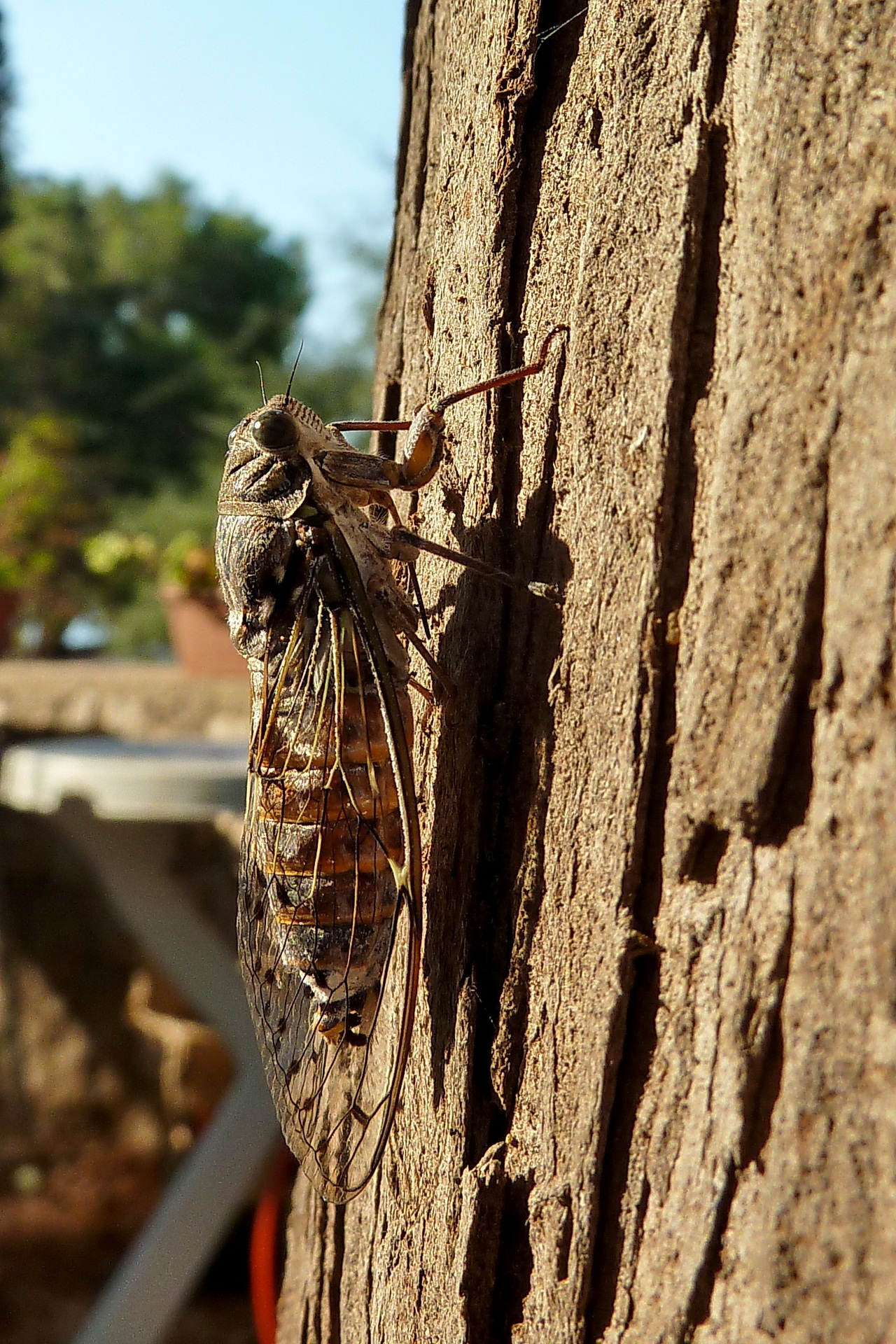
Photo 22. 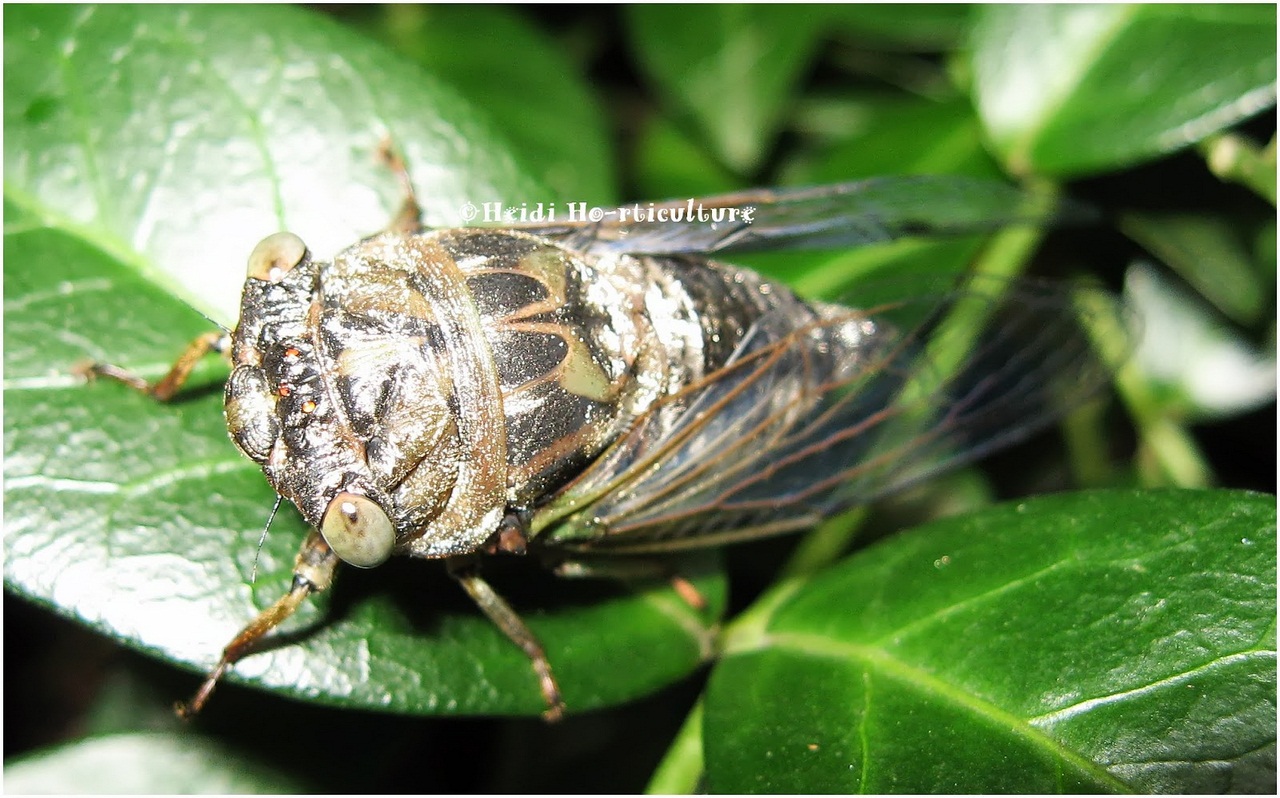
Photo 23. 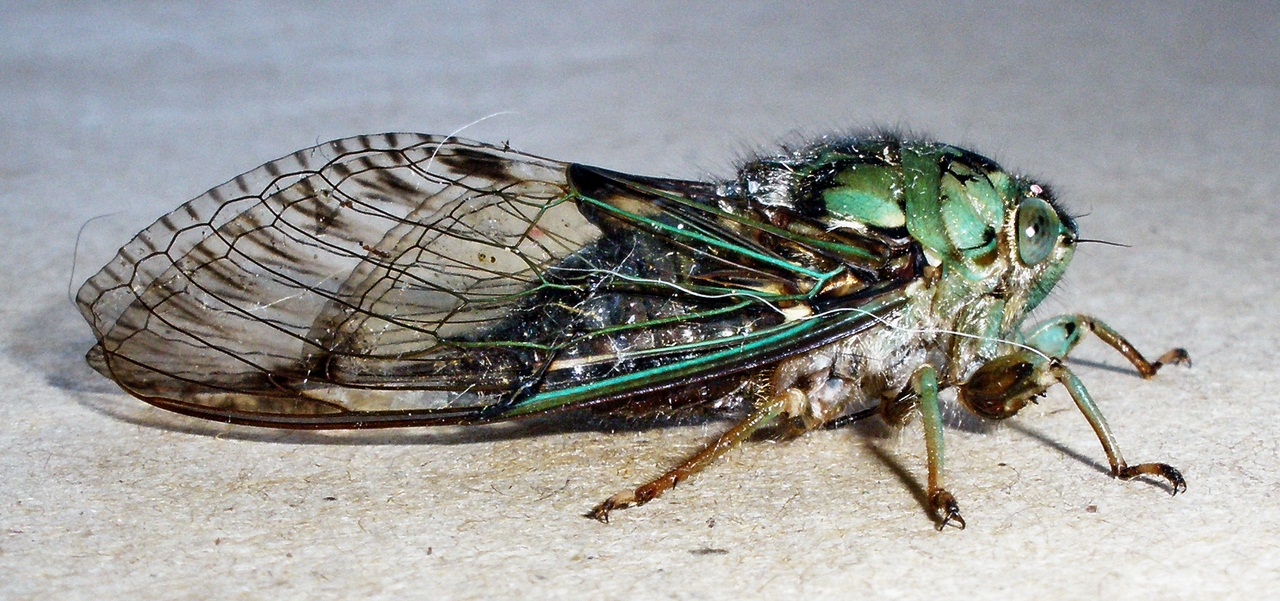
Photo 24. 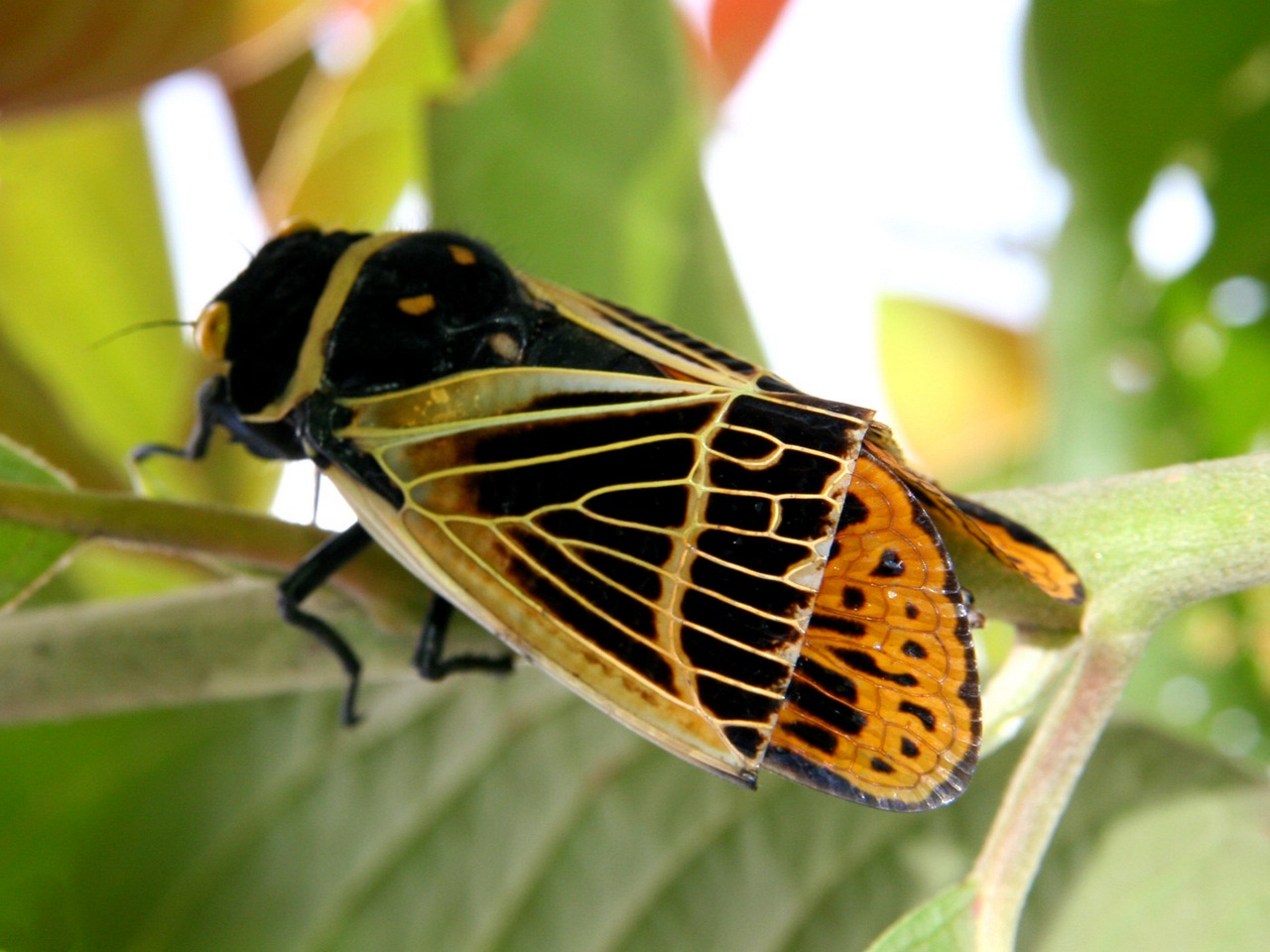
Photo 25. 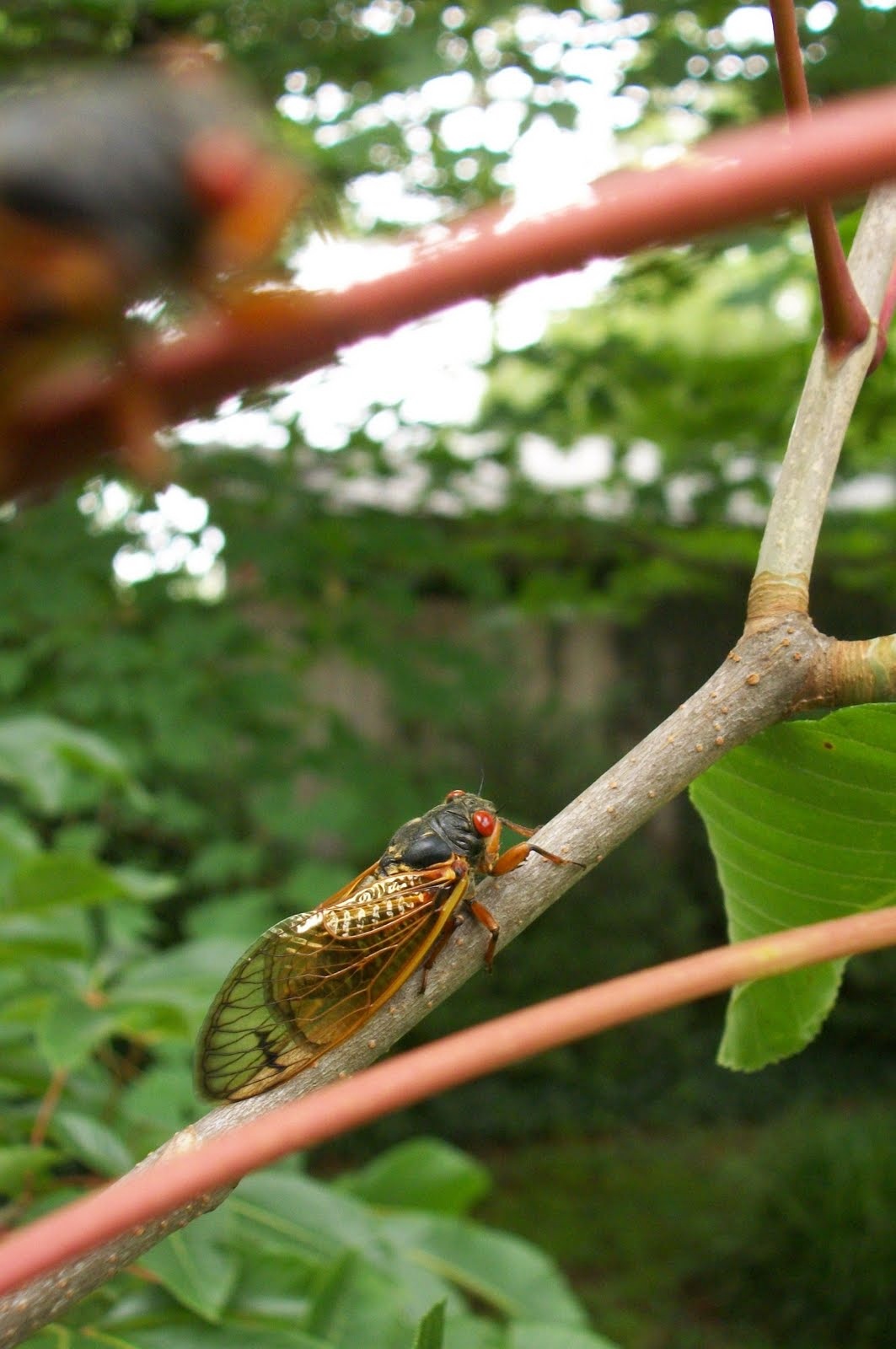
Photo 26. 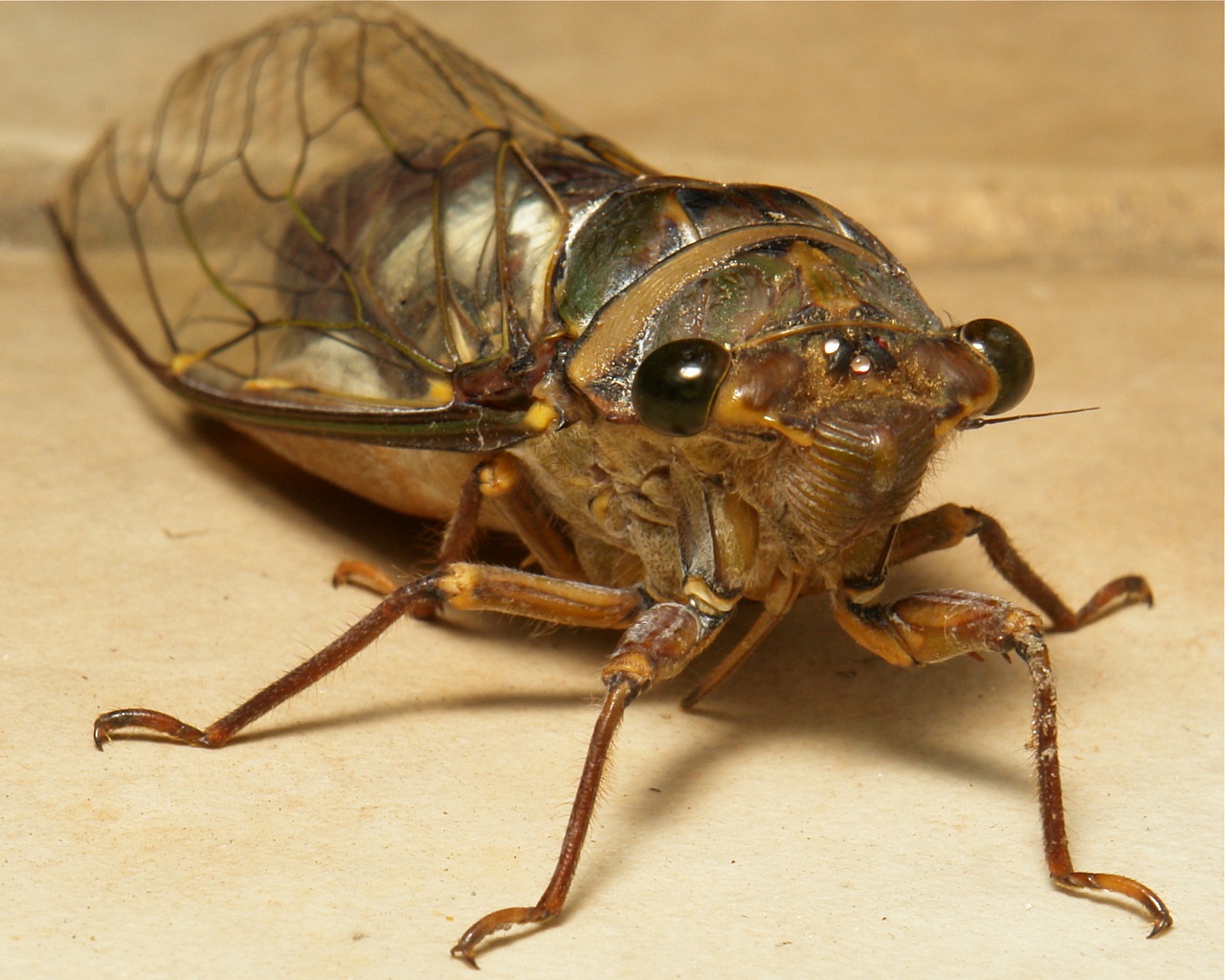
Photo 27. 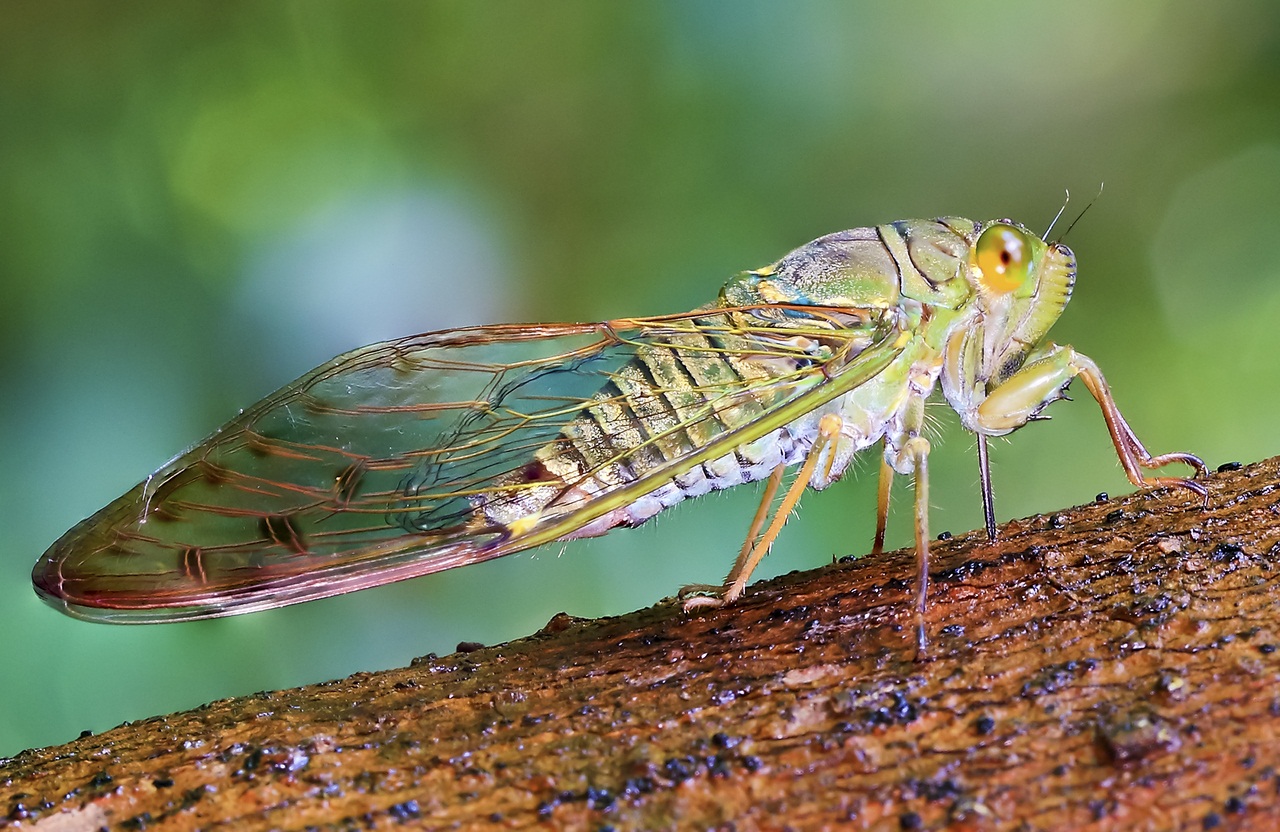
Photo 28. 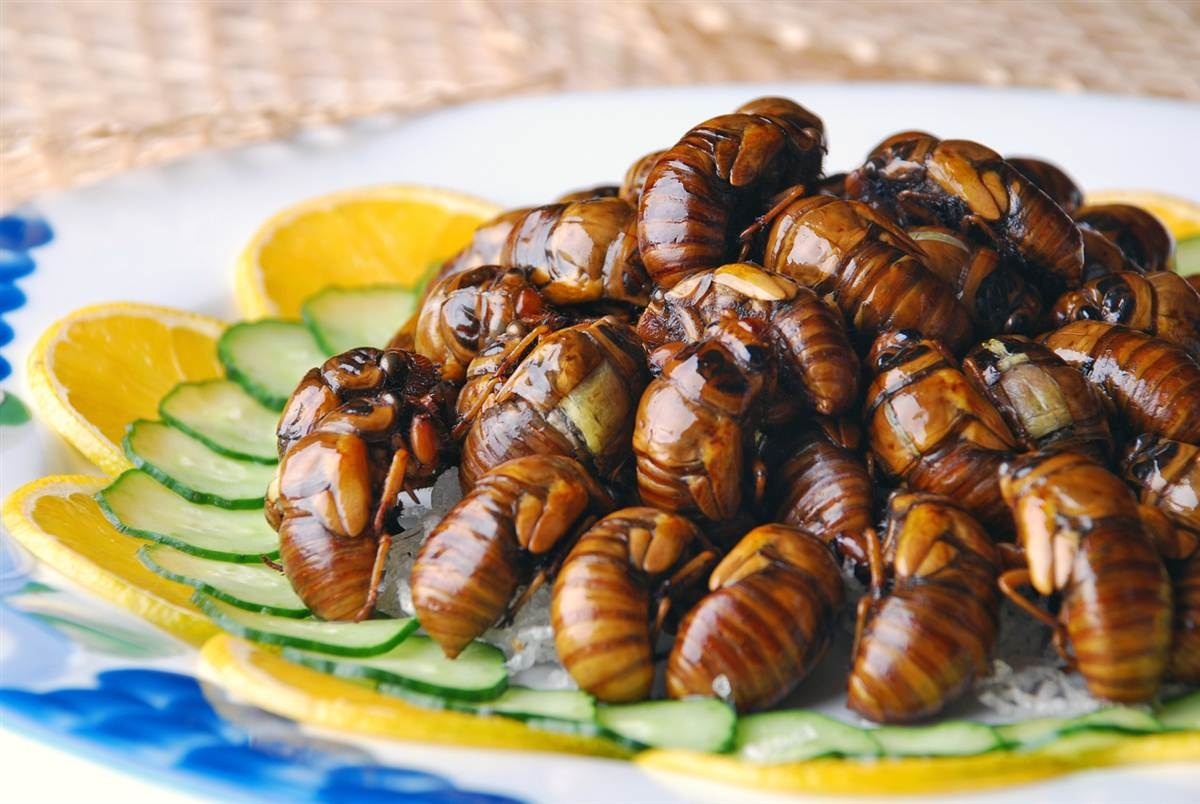
Cicadas are said to contain as much protein per kilogram as red meat. Fans boil or fry them like shrimp. There are even cicada barbecue recipes.
Photo 29. 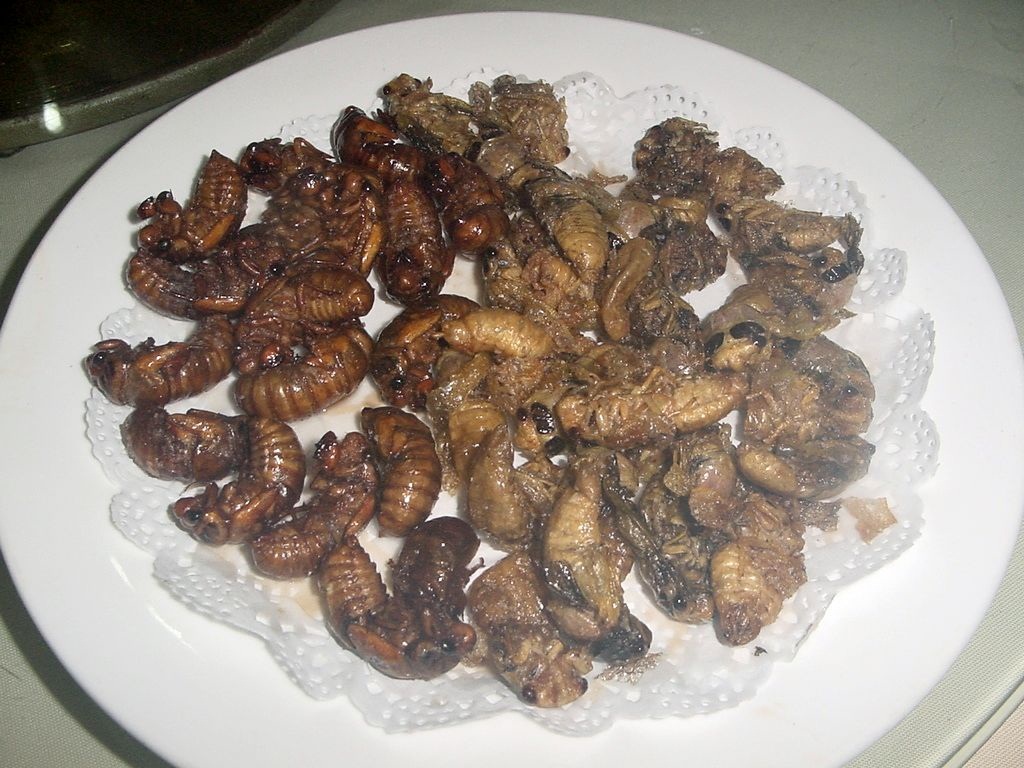
Cicadas (Cicadidae) are insects of the Hemiptera family, which also includes aphids, predatory bugs, bed bugs and water bugs. Cicadas, found mainly in tropical countries, are widely known for their melodic chirping.
These are fairly large insects. The body of the cicada is wide and short, on the sides of it there are two pairs of transparent wings pierced by veins; in some species of cicadas, the tips of the wings are brightly colored. A close acquaintance with cicadas shows that on their heads, between compound eyes, there are 2-3 more simple eyes. The legs are strong, the hind legs are elongated in many species, jumping. It is cicadas that have dense front wings.
Representatives of the family of real, or singing, cicadas are residents of mostly tropical and generally warm countries. There are many species of cicadas (about 1,500 species are known), reaching large sizes. For example, the royal cicada (Rotrota impera-toria), common in Indonesia, has a body length of 6.5 cm, and a wingspan of 18 cm.
| mountain cicada |
| Value | Body length 2 cm, wingspan 5 cm |
| signs | Body brownish; large, transparent wings, folded on the abdomen at rest |
| Nutrition | Sucks juices from various herbs and shrubs with a proboscis; larvae eat the roots of plants |
| reproduction | After fertilization, the females stick their eggs on various herbs and shrubs; larvae, when they hatch, burrow into the ground and crawl out to the surface only after the last molt; incomplete development cycle |
| habitats | Prefers dry, warm slopes with low vegetation and sparse shrubs; widely distributed throughout the world in warm climates |